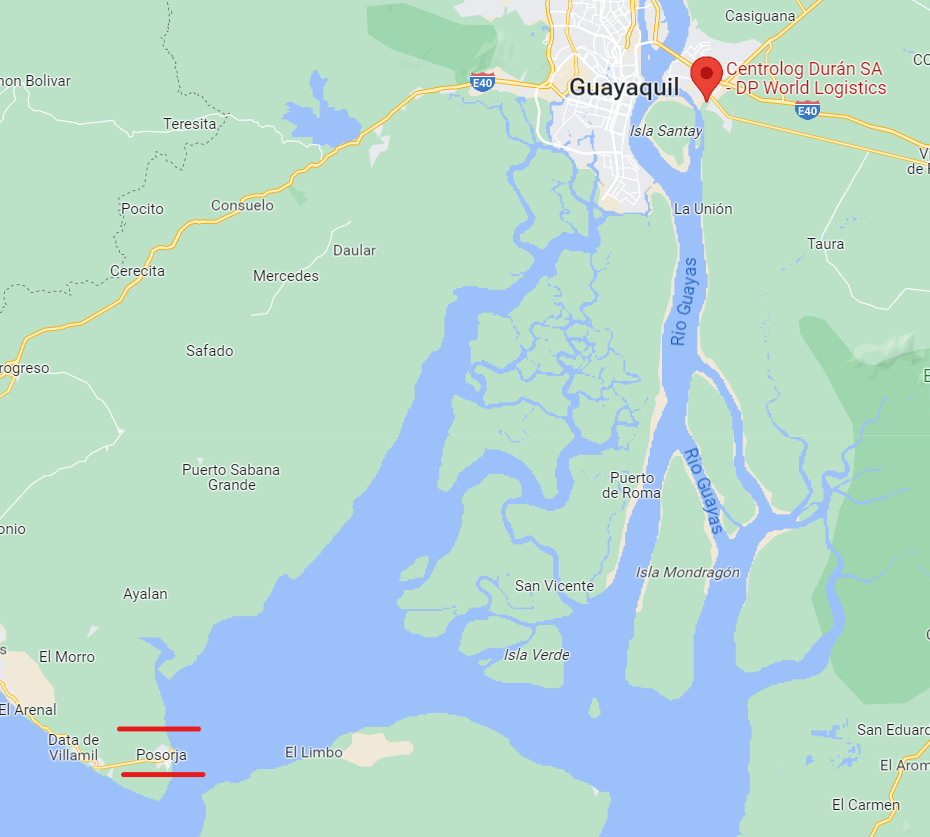Ecuador - 2.1 Ports Assessment
Overview
Every country on the west coast of South America except Ecuador has ports with draft of 15-16 metres, capable of handling fully laden 12,000-15,000 TEU vessels. This is despite the fact that Guayaquil is the second largest import-export port in South America after Santos, but has a draft of less than 10 metres plus a vessel length restriction of 305 metres.
Ecuador is a maritime country by nature. 90% of the commercial flow takes place by maritime transport, which makes its ports and maritime terminals an extremely important vector for the attraction and distribution of goods. Although the state port system in Ecuador is multipurpose, there is some specialization due to its infrastructure and organization, around different types of merchandise.
Ecuador borders the Pacific Ocean and has three principal ports in:
Guayaquil: Specialized in the export of bananas and containerized cargo. 20% of imported cargo comes from Argentina, Brazil, USA and Mexico.
Manta: with 92% of the port's activity based on imports. Bulks stand out (67% of the total mobilized cargo). The countries of origin or destination of the cargo mobilized from this port are the USA, Canada, Peru, Argentina and Colombia.
Esmeraldas: Multipurpose port that handles five types of cargo: general; containerized, liquid, solid and self-propelled vehicles. In 2020, cargo with the most important movement ratios were palm oil, containers and wire rod, with a participation in the total movement of 27%, 24% and 16% respectively.
Regarding the enabled port terminals, there are 11, notably Bananapuerto, Fertisa and Fertigran, all operating in Guayaquil. These three terminals encompass around 83% of the imports and exports of the total cargo moved in the eleven terminals. About 51% of imports and 92% of Exports carried out in authorized port terminals are carried out by containerized cargo.
The control of the load is carried out by means of a software called Terminal Management System which permanently verifies and provides complete information about the location and condition of the load. The standards of protection of the ports are certified according to the International Ship and Port Facility Protection Code through the Under Secretariat of Maritime Transport and Ports.
Port of Guayaquil
The 95-hectare port of Ecuador is the most relevant in the nation as it is responsible for 90% of the commercial flow that directly affects the national economy and the main port that connects with the capital city. Its strength is the purchase - sale of inputs, articles and chemical materials from foreign trade, its location is in the Gulf of Guayaquil, 50 nautical miles from the Pacific, making it an attractive port of Ecuador for investors. Although experts assure that it has possibilities of expansion it needs an improvement in its physical conditions because during low tide the ships take up to 6 hours to go out to the open sea.
Posorja Deepwater Port (Guayaquil Area)
The deep waters of Posorja Port is delegated by the Guayaquil Port Authority (APG) to the DP World Posorja Company. During the first operational year DP World Posorja has received 180 vessels. In addition, Neo-Panamax vessels have sailed for the first time in Ecuadorian waters at their maximum capacity, through the new access channel with characteristics that are 16.5 meters deep and 175 meters wide.
Main Characteristics
Terminal: 480 meter pier, 750,000 TEU annual capacity, 4 Quay Cranes, 15 RTG.
Access Road: A 20 km road that connects the terminal with the main motorway network, which will allow an expeditious, orderly and safe access route to the port.
Access Channel: A new and safer channel 16.5 m deep and 21 nautical miles long. The navigation channel will allow to occupy the maximum cargo capacity of Post Panamax type ships and larger ships that cross the Panama Canal, with a length of up to approximately 400m and a draft of 16m, with a cargo capacity of up to 15 thousand 40-foot containers .
Logistics area: Direct connectivity with the deep water port of Posorja. 100 hectares of land available.
Posorja Deep Water Port, Google Earth
Port of Manta
It is the best port in Ecuador in terms of infrastructure. It has 4 berths and 15 meters deep in the dock, allowing easy entry to maritime vessels. Its traffic is based on commercial vessels, fishing vessels and tourist cruises, because the port connects with the most important regions of Ecuador. The products that are unloaded are of any kind, from vehicles to bulk items in the 1,200 meters of the port. Although most are transfer, that is, they are like a stopover for transfer to other countries.
Source: Bianca Schröder, ecuatraveling.com
Port of Esmeraldas
Source: El Oficial, Puerto de Esmeraldas, https://eloficial.ec/
Its location in the Pacific Ocean in the north of Ecuador a few kilometers from Colombia allows it to easily load and unload supplies for the port city thanks to the maritime traffic of the neighboring country and other foreign connections. Unlike other ports, this one contains a closed circuit that offers merchants the possibility of better security and surveillance standards for companies that wish to store their containers.
Ecuador - 2.1.1 Port of Esmeraldas
Port Overview
This port is located in the northwest of Ecuador at the mouth of the Esmeraldas River.
From its privileged position, it has occupied the position of main export center for wood, agricultural resources and other products. It is also the terminal of the Trans-Ecuadorian pipeline that transports oil from the oil fields in the northeast of the country. It is located in the northern part of Ecuador in the Province of Esmeraldas, next to the mouth of the river of the same name.
It stands out for being a multipurpose port, with direct access from the open sea, sheltered in a 32-hectare dock, which has protection of two breakwaters, which prevents the port from being affected by storm surges, which allows great manoeuvrability and docking of ships, and which also has qualified towing and pilotage services.
Its management is in charge of the Esmeraldas Port Authority, as a commercial and fishing port. The average annual temperature is 25.6 °C. With (738 mm of average annual rainfall producing its maximum in January, February and March. The prevailing winds are W and NW.
The Puerto de Esmeraldas has the following characteristics and services:
• Infrastructure and equipment for handling project-type loads.
• Operational flexibility and administrative efficiency
• Comprehensive security: port qualified with the International Ship and Port Facility Security Code (ISPS), Zero Theft and the Business Alliance for Secure Commerce (BASC) Certification, in the process of ISO 9,000 and 28,000 certification.
• Electricity and drinking water service 24 hours a day
• Customs agility.
• Regular lines with easy connections to the whole world.
• Proximity to the main industrial and commercial centres of the country.
• Communication routes in optimal condition and alternate routes.
• Personalized attention 24 hours a day, 365 days a year.
Facilities
It has two 200-meter long breakwater docks with the capacity to receive 4 vessels simultaneously, that is, 800 linear meters of berths for the operation of container ships, bulk carriers, carts, fishing vessels and cruise ships. Both docks have a platform width of 45 meters each. It also has another 620 linear meters for exclusively fishing and cabotage activities. Its dock has 110 hectares protected by a breakwater that allows for quick and comfortable arrival, loading and unloading of vessels.
Storage: It has 120,980 m2 (twelve hectares) for storage, between patios and a covered warehouse.
Access: Access to the Port is direct from a natural depression in the seabed that reaches up to 200 meters from the port entrance. The area where the docks are located is protected by breakwaters, which frame a 42-hectare basin.
Puerto website: http://www.puertoesmeraldas.gob.ec/
Key port information may also be found at: http://www.maritime-database.com
|
Port Location and Contact |
|
|---|---|
|
Country |
Ecuador |
|
Province or District |
Esmeraldas |
|
Nearest Town or City with Distance from Port |
Esmeraldas (4 km) |
|
Port's Complete Name |
Puerto de Esmeraldas |
|
Latitude |
0.994167 |
|
Longitude |
-79.64444 |
|
Managing Company or Port Authority
|
Autoridad Portuaria Esmeraldas |
|
Management Contact Person |
Ingº Fernando Xavier Moncayo Raad – General Manager - Autoridad Portuaria de Esmeraldas gerencia@puertoesmeraldas.gob.ec Teléfonos: 062 715757 062 721354 jefedeoperaciones@puertoesmeraldas.gob.ec Tel. 062 722367 Ext.:463-464 Atención al Cliente y Comercialización acliente@puertoesmeraldas.gob.ec ssimbana@puertoesmeraldas.gob.ec Tel. 062 721354 Ext.:470-471 comunicacionsocial@puertoesmeraldas.gob.ec Tel: 062 721354 Ext: 472-473
|
|
Nearest Airport and Airlines with Frequent International Arrivals/Departures |
Aeropuerto Internacional Coronel Carlos Concha Torres |
Port Picture

Description and Contacts of Key Companies
|
Company |
Services |
Telephone |
Email Address |
|---|---|---|---|
|
INTERTEK INTERNACIONAL LIMITED |
Inspection |
042687180 |
|
|
PROVEEDORES MARÍTIMOS LOZADA CHAVEZ & ASOCIADOS |
Water and nursery provision |
062721355 062728111 |
|
|
COTECNA DEL ECUADOR |
Cargo Inspection |
042523723 |
|
|
ZAMARINO S.A |
Berth cleaning |
62727974 |
|
|
MARDCOMSA |
Supply of fuel, lubricants and water per vessel |
52626443 |
|
|
SUMATRA |
Piloting |
042599175 42136177 |
|
|
CONTROL INTERNACIONAL DEL ECUADOR C.A. |
Cargo inspection |
2443602 2446689 |
|
|
SOUTH AMERICAN MARINE ENGINEERING & SERVICES SOUTHA S.A |
Maintenance of vessels and equipment, provision of supplies, provision of nurseries |
046002160 042103659 |
|
|
PARCESHI S.A. |
Vessel fuel supply |
042283158 042396495 |
|
|
TRIESTISA |
Stowing, re-stowing and de-stowing |
062715425 |
For more information on port contacts, please see the following link: 4.4 Port and Waterways Companies Contact List.
Port Performance
In the western port area, there are extensive facilities for loading and unloading fuel oil, gasoline, diesel and kerosene. Primary exports consist of bananas and wood, while main imports are pipes, machinery and steel billets. The port has capacity for ships weighing between 40,000 and 100,000 deadweight tonnage (DWT). There is a Free Zone that houses companies and shipping companies adjacent to the port facility.
Access cannel
General characteristics Access to the port terminal is almost directly from the sea. Latitude: 01°01' 45''North (N) Longitude: -79°39'6''West (W).
The access channel has the following characteristics:
From the sea buoy 2 miles to the entrance to the pier. Width: 200 meters. (656.2 feet) - Depth: 11.5 m. (37.8 feet) Average tide width at the entrance: 1.80 m. Average width of the tide at the foot of the pier: 3.80 m.
Navigation aid systems
The channel has depths greater than 11.5 meters. Regarding the minimum level of low tides and allows quick and safe navigation, with an adequate navigation aid system. The tranquility of its waters and the excellent climatic conditions of the port guarantee its operation 365 days a year.
Bunker
Esmeraldas / Tepre has bunker available for the following grades: MGO at $1320.5 per ton, and the last price update was on Friday, August 11, 2023.
|
Seasonal Constraints |
||
|---|---|---|
|
|
Occurs |
Time Frame |
|
Rainy Season |
Yes |
From December to March, although this can vary constantly. |
|
Major Import Campaigns |
No |
|
|
Other Comments |
The tranquillity of its waters and the excellent climatic conditions in the port area guarantee its operation 365 days a year. |
|
|
Handling Figures for 2022 |
|
|---|---|
|
Vessel Calls |
Docking of 33 vessels in the first four months of 2022, compared to the 15 vessels entered in the same period in 2021. (Comparative note: 2012, 312 vessels, 2013 294 vessels, 2014 256, 2019 142 vessels.) |
|
Container Traffic (TEUs) |
N/A
(Max. Cap. Installed in port-terminal relationship 850 TEU's) |
|
Handling Figures Bulk and Break Bulk for 2022 |
|
|---|---|
|
Bulk (MT) |
Liquid bulk occupied the number one position in “type” of manoeuvre cargo (Palm and Soybean oil) with 92,000 MT. Exports, mostly coconut oil, have reached 25,991 tons, exceeding the 14,315 tons recorded in January to April in 2021 Others, Solid bulk (PetCoke and Scrap) with 83,000 MT |
|
Break bulk (MT) |
Carga total en importación y exportación de 134 339 toneladas hasta abril 2022. |
Discharge Rates and Terminal Handling Charges
For information on port rates and charges, visit: Puerto de Esmeraldas website. http://www.puertoesmeraldas.gob.ec/
Berthing Specifications
It has a 200 m long breakwater, a 350 m long general cargo dock and a 185 m long container dock with a depth of 11 m. An additional dock accommodates fishing boats and barges and carries out cabotage activities.
|
Type of Berth |
Quantity |
Length (m) |
Maximum Draft (m) |
Comments |
|---|---|---|---|---|
|
Conventional Berth |
1 |
350 |
11 |
|
|
Container Berth |
2 |
185 |
10 |
|
|
Silo Berth |
No |
|
|
|
|
Berthing Tugs |
2 |
|
|
Two azimuthal stern drive (ASD) tugs from Damen Shipyards to support oil tankers and other vessels entering port. |
|
Water Barges |
Yes |
|
|
General Cargo Handling Berths
|
Cargo Type |
Berth Identification |
|---|---|
|
Imports - Bagged Cargo |
Yes |
|
Exports - Bagged Cargo |
Exports, mostly of coconut oil, have reached 25,991 tons, exceeding the 14,315 tons recorded from January to April in 2021. |
|
Imports and Exports - RoRo |
Imported 5,416 units of vehicles, vehicle cargo with 27,000 MT (cars and machinery) [Comparative note: in 2018 more than 11,000 vehicles were imported] |
|
Other Imports |
Containers, general cargo, liquid and solid bulk, vehicles, pipes, spare parts, CKD, iron, steel, oil equipment and iron scrap. |
Port Handling Equipment
|
Equipment |
Available
|
Total Quantity and Capacity Available |
Comments on Current Condition and Actual Usage |
|---|---|---|---|
|
Dockside Crane |
No |
|
|
|
Container Gantries |
No |
|
|
|
Mobile Cranes |
Yes |
1 DEMAC AC-400,
1 DEMAC crane super transporter for AC-400 1 Terex x 80 ton |
Only for patio manouvres 0-24 Ton Lifts, 25-49 Ton Lifts, 50-100 Ton Lifts |
|
Reachstacker |
Yes |
1 x 45 ton, 1 x 10 ton, 2 toploaders x 40 ton, 1 Terex x 45 tons |
Hyster, Terex, operational
For loading full container and empty container. |
|
RoRo Tugmaster (with Trailer) |
Yes |
21 |
20 meter long Roll-on Roll-off dock for rolling loading and unloading located adjacent to the main dock |
|
Grain Elevator with Bagging Machines |
No |
|
|
|
Transtainer |
Yes |
5 x 40 tons |
Kodiak Chevrolet, operational, for container yard maneuvers. |
|
Forklifts |
Yes |
1 x 2.5 ton,1 x 3.5 ton, 1 x 7ton, 3 x 10 ton, 1 x16 ton, |
CPCD70, CPCD100, CPCD160A, CPQD25, CPCD3.5 |
Container Facilities
Currently, a container yard has been improvised in this port with an area of four hectares, without its own backup dock and using the system of equipment to handle ship-port containers, with the ships' own cranes for embarkation and disembarkation. tractor-trailer for movement, and reachstaker type front loaders for stacking in the storage area, which causes downtime and delay of the ship in port, as well as loss of efficiency in stacking due to the large manoeuvrability space. you need a reachstaker. To handle an appreciable volume of containers that the Port of Esmeraldas presents, the problems of dock congestion must be overcome.
|
Facilities |
20 ft |
40 ft |
|---|---|---|
|
Container Facilities Available |
Yes |
Yes |
|
Container Freight Station (CFS) |
Yes |
Yes |
|
Refrigerated Container Stations |
Yes |
Yes |
|
Other Capacity Details |
N/A |
N/A |
|
Daily Take Off Capacity |
252, total |
|
|
Number of Reefer Stations |
N/A |
N/A |
|
Emergency Take-off Capacity |
N/A |
N/A |
|
Off take Capacity of Gang Shift |
N/A |
N/A |
Customs Guidance
For import procedures, the following documentation/information will be required at the service windows of the Billing Department to obtain a gate pass:
The cargo number authorized by SENAE.
For procedures with SENAE authorizations through administrative acts, you must present a copy of the document.
Exit Authorization Letter (CAS) (Electronic or Physical)
Copy of the Bill of Lading (BL), for the cases of General Cargo and Loose Cargo
Information of the transport company, or name of the driver and license plate of the vehicle that will collect the load
This documentation will be required by the access control booths before access.
The gate pass may also be issued to the customs agent/assistant or other personnel authorized by the importer to carry out customs formalities.
The requirements of the “Port Security Manual for the Issuance of Credentials and Provisional Permits” must be met.
For cargo dispatch, warehouses have a scheduled delivery service with assigned shifts, taking into account the following aspects:
Depending on availability, the customer chooses the most convenient shift to pick up their load. Shifts include the earliest and latest pick-up times.
In the event that a client misses their turn (that is, does not arrive at the assigned time), it is possible to request another one the same day at the access control booths.
For cases of Direct Debit (DD) or Advance Clearance (DA), verify that the customs procedure has been authorized and the operation is scheduled in the Customer Service Department.
For more information on customs in ECUADOR, please see the following link: 1.3 Customs Information.
Terminal Information
MULTIPURPOSE TERMINAL
Multipurpose terminal, with direct access from the open sea, sheltered in a dock, which allows great manoeuvrability and docking of ships. Its geostrategic location is of importance in relation to the Asian markets, being equidistant from those of the South, Central and North America. It is a Multipurpose Port, the facilities facilitate access for all types of vessels, guaranteeing easy manoeuvring of vessels and loading, unloading and provisioning operations, as well as appropriate safety and mobility conditions for the arrival of cruise ships and tourists.
GRAIN AND BULK HANDLING
This medium-sized general and bulk cargo port is favourably positioned for shipping lumber, agricultural products, raw materials and consumer goods. It is the terminal of the trans-Ecuadorian oil pipeline linked to the oil fields in the northeast of the country. About 12 percent of the country's international trade is carried out through the port, with a total of 850,000 tons of cargo annually.
Since the port does not typically handle bulk grain, cargo must be bagged for storage or transported directly by truck out of the port (4 hoppers are available for loading loose grain onto trucks directly from the ship). The solid bulk cargo handled at the port is entirely non-food cargo: Import of steel pellets and crushed scrap and export of wood chips. All of this cargo is stored in open yard facilities.
MAIN STORAGE TERMINAL
It has 120,980 m2 (twelve hectares) for storage, including patios and a covered warehouse.
Storage capacity is limited, but it has not yet reached its end; However, large quantities of empty containers, stacked 4 high, occupy approximately 25% of the yard's total capacity. Two warehouses (7,200 m² and 1,500 m²) are currently used for the storage of steel coils and bags of cement. In an emergency, warehouses can be emptied and reused after intensive floor cleaning and roof repair.
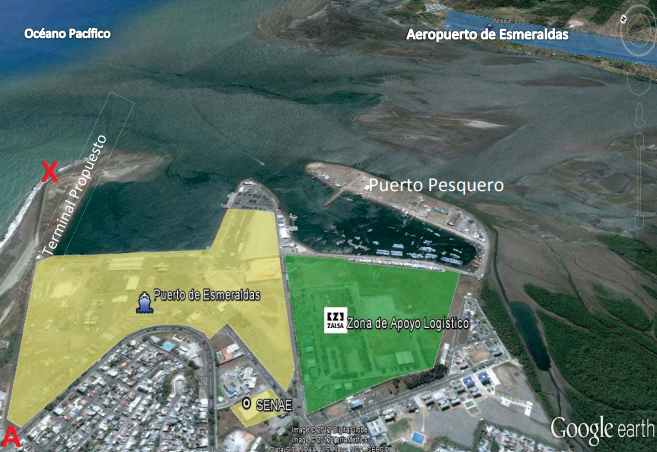
There is ample storage space, including a 12-hectare paved area between the patios and the basement.
|
Storage Type |
Number of Storage Facilities |
Area (m2) |
|---|---|---|
|
Bagged Cargo |
1 |
1,500m2 |
|
Refrigerated Cargo |
N/A |
N/A |
|
General Cargo |
1 |
7,200m2 |
Stevedoring
The Esmeraldas Port Terminal offers the stowage and unloading service. The port has adequate equipment and material, duly certified, which guarantees safety and efficiency in cargo handling. Various types of cargo are handled such as containers, agricultural products, general cargo, vehicles, machinery and project cargo. The stevedoring operation is carried out by private companies, classified and regulated by the National Government. The list and ranking of operators is carried out according to the type of activities and services they provide to the terminals (cargo handling, pilotage, towing, dredging, port storage and other activities).
Hinterland Information
By landway:
The road conditions of access to the Esmeraldas province are regular. In case of interruption of access routes, the state intervenes with priority to restore light and heavy traffic to and from the port sector, however, there are possible rock falls, problems with unstable slopes and settlements on the road.
The Quinindé-Esmeraldas section, on the E-20 highway, has at least 28 critical points: sinkholes, cuts in the asphalt layer and collapsed sewers have become a risk for drivers who travel daily along the main access route to the capital. The Quinindé road is in poor condition, with a lack of signage and luminosity at night. The most critical area is located in the El Vergel area, where there is an undermining of the land, which has forced a variant of the road to be enabled to allow the passage of the nearly 18,000 vehicles that travel on this road every day.
On the “Y” highway of Tababuela – San Lorenzo – Esmeraldas – Pedernales, there is an activated geological fault in the San Gerónimo sector, between Salinas and Lita. The roads in the northern area will be monitored through the GPS system of the road patrols, which in case of emergencies will mobilize the necessary road equipment.
For more information on feasibility consult: ECU 911 Consult about ways
By sea:
Ecuador has implemented the maritime security requirements contained in Chapter XI-2 of the International Convention for the Safety of Life at Sea of 1974 and the International Ship and Port Facility Security Code (ISPS) through the Law of Merchant Marine of 2004 and the Maritime Safety Regulations of 2004. These regulations apply to all seaports in Ecuador and to passenger ships, cargo ships of 500 GRT or more and mobile offshore drilling units on international voyages.
Port Security
Comprehensive security: port qualified with the International Ship and Port Facility Security Code (ISPS), Zero Theft and the Business Alliance for Secure Commerce (BASC) Certification, in the process of ISO 9,000 and 28,000 certification. Security Level 1 applies in territorial waters and maritime ports of Ecuador. Any change in the level of security or its area of application will be communicated through notices to mariners, nautical advisories, circulars, VHF communication or any other appropriate means.
|
Security |
|
|---|---|
|
ISPS Compliant |
Yes |
|
Current ISPS Level |
1 |
|
Police Boats |
Yes |
|
Fire Engines |
Yes |
Ecuador - 2.1.2 Port of Guayaquil
Port Overview
According to the Undersecretariat of Ports and Maritime and River Transport, 85% of the country's non-oil cargo transfer is moved through the Port of Guayaquil through its public and private terminals.
There are two large groups of facilities: Sea Port, owned/managed by the Port Authority which has granted concessions to private operators, namely Contecon Guayaquil S.A. and Andipuerto, for 20 years; and Isla Trinitaria, which has attracted private operators to invest in port infrastructure. In the latter, three companies operate terminals directly next to each other: Terminal Portuario de Guayaquil (TPG), Terminal Portuario Bananapuerto operated by Aretina (the maximum draft for all terminals on Isla Trinitaria is 9.75 meters) and Puerto Trinitaria S.A. operating with: 1 dock 126 meters in length, dock draft: Up to 11.5 meters (high tide) 9.75 meters (low tide), Boat length: up to 250 meters, No. Berths: 2. The Fertisa Port Terminal offers refrigerated and bulk facilities; and the Ecuadoriana de Granos (Ecuagran) bulk terminal offers a berth directly over the Guayas River and inside the city. There are other private berth operators such as Molinos del Ecuador, Sepresa and Industrial Molinero along the Guayas River. All terminals have a single berth; Vessels may have a maximum length of 180 meters and a maximum draft of 6.5 meters.
Dredging work in the port access channel
In January 2020, the Guayaquil Port Terminal (TPG) set a record in the port history of Ecuador and the region by receiving the largest ship to arrive at ports in Latin America. The arrival of the APL Esplanade ship marked the inauguration of the works to deepen the maritime access channel and the estuaries that connect the marine buoy with the port terminals. The dredging works were carried out by Canal Guayaquil, a subsidiary of the Belgian company Jan De Nul. , which will maintain the sea route for a 25-year contract. The company dredged the 92-kilometer channel and eliminated the Los Goles rocky area, which constituted an obstacle to navigation. The depth of the channel went from 9.5 meters to 12.5 meters and 13 meters, with tidal benefit
Canal Guayaquil S.A., responsible for the dredging work to deepen the access channel to the public and private maritime and river port terminals of the Main Port, completed the tasks. Deep draft ships enter the port of Guayaquil, through 12.5 and 13 meters of depth (with tidal benefit).

Port website: https://www.cgsa.com.ec/
Key port information may also be found at: http://www.maritime-database.com
|
Port Location and Contact |
|
|---|---|
|
Country |
Ecuador |
|
Province or District |
Guayas |
|
Nearest Town or City with Distance from Port |
Guayaquil (10 km) |
|
Port's Complete Name |
Puerto Marítimo de Guayaquil - Libertador Simón Bolívar |
|
Latitude |
-2.280833 |
|
Longitude |
-79.91361 |
|
Managing Company or Port Authority
|
Guayaquil Port Authority
Contecon Guayaquil S.A. exercises the administration and operation of the container and multipurpose terminal of the Maritime Port of Guayaquil
|
|
Management Contact Person |
Héctor Hugo Plaza Subía, Gerente de APG +593 4 2480120, +593 4 2012000 Lcdo. Jonatan Sotalin – Autoridad Portuaria de Guayaquil –- hernansotalin@apg.gob.ec |
|
Nearest Airport and Airlines with Frequent International Arrivals/Departures |
Aeropuerto Internacional José Joaquín de Olmedo
American Airlines, Avianca, Copa Airlines, Iberia, KLM, LAN, Air Europa, Latam, TACA, TAME, UPS |
Port Picture

Legend
Yellow: Sea Port (Contecon Guayaquil S.A. and Andipuerto)
Red: Bananapuerto Port Terminal
Purple: Fertisa Port Terminal
Green: Ecuadorian Grains (Ecuagran)
Description and Contacts of Key Companies
|
Compañia |
Servicios |
Contacto |
Correo electrónico/ Website |
|---|---|---|---|
|
Andipuerto Guayaquil S.A. |
Multipurpose grain terminal, bulk |
|
|
|
Aretina |
Port Logistics Operator FCL, bulk, warehouse, container yard |
|
|
|
Contecon Guayaquil S.A. |
Port Terminal Operator |
+593 4 600 6300 |
|
|
DPWorld Posorja |
Port Operator, FCL |
+593 4 380 4850 |
|
|
Ecuaestibas S.A. |
Tugs, berthing |
+593 042 517 360 |
|
|
M&C Surveyors |
Consultancy and surveying services to the marine, commodities and insurance sectors |
+51947245898 |
|
|
Petrocomercial |
Fuel, bunkering, greases, oil products |
043803000 |
|
|
Puerto Trinitaria - Trinipuerto S. A |
Support Activities for Rail Transportation |
+593 4 269 7244 |
|
|
QC Terminales Ecuador |
Port Terminal, Bulk oil, chemical, warehouse |
|
|
|
Setmabas S.A. |
Ship services, technical support and supplies |
+593 4-202-8158 |
|
|
Terminal Portuario de Guayaquil TPG |
Port Terminal, FCL |
|
Port Performance
During 2022, the Guayaquil Port Terminal (TPG) for the fourth consecutive year was the port that registered the largest cargo movement in Ecuador
Export
Among the main products exported through the TPG are bananas, shrimp, wood and cocoa (representing 74%), whose main destinations were China, Chile, India, Japan, Argentina, and the United States.
Import
The goods that were imported in the greatest quantity were plastic items, vehicle parts, paper, books, food and products for its preparation, construction materials, paints and finishes.
In January 2020, Terminal Portuario Guayaquil (TPG) set a record in the port history of Ecuador and the region by receiving the largest ship to arrive at ports in Latin America. The arrival of the APL Esplanade ship, which has a length of 368.82 meters and a beam of 51 m, arrived at the Guayaquil Port Terminal thanks to the recent deepening of the docking dock. It marked the inauguration of the works to deepen the maritime access channel and the estuaries that connect the maritime buoy with the port terminals. The dredging works were awarded and carried out by Canal Guayaquil, a subsidiary of the Belgian company Jan De Nun, which will maintain the maritime route under a 25-year contract. The company dredged the 92-kilometer channel and eliminated the Los Goles rocky area, which constituted an obstacle to navigation. The depth of the channel went from 9.5 meters to 12.5 meters and 13 meters, with tidal benefit.
The Port Authority of Guayaquil, APG, through its concessionaires (Contecon1 and Andipuerto) and delegate (DP World Posorja), works 24 hours a day, seven days a week in the reception and dispatch of products.
-
Contecon reached the figure of 12 million TEUs moved since operations began at the Guayaquil seaport, Libertador Simón Bolívar (Container Terminal), which was in 2007.
|
Seasonal Constraints |
||
|---|---|---|
|
|
Occurs |
Time Frame |
|
Rainy Season |
Yes |
From December to March |
|
Major Import Campaigns |
No |
|
|
Other Comments |
The greatest historical limitation of the Port of Guayaquil is the limited water depth in access to its facilities. Canal Guayaquil S.A., responsible for the dredging work to deepen the access channel to the public and private maritime and river port terminals of the Main Port, completed the tasks. Deep draft ships enter the port of Guayaquil, through 12.5 and 13 meters of depth (with tidal benefit). |
|
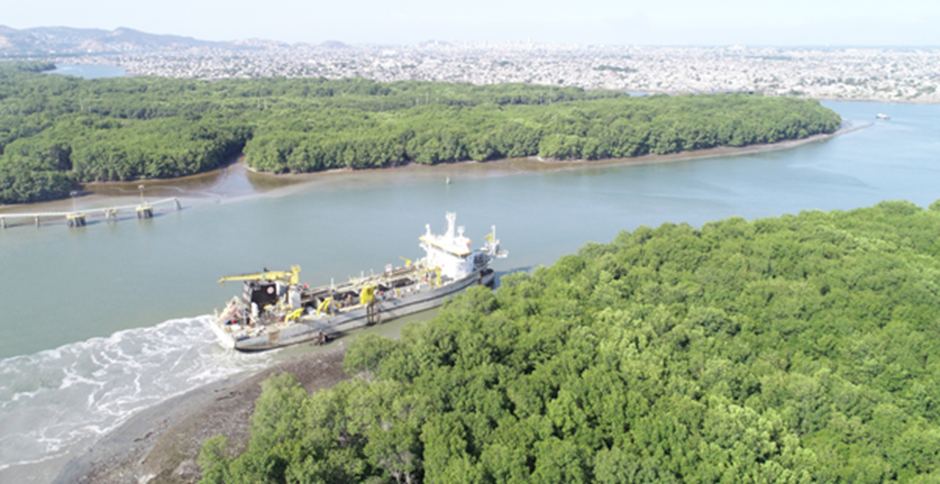
Source: www.jandenul.com/projects/deepening-guayaquil-harbour-access-channel-ecuador
|
Handling Figures for 2022 |
|
|---|---|
|
Vessel Calls |
2700 deep draft ships with a capacity of 12,000 to 14,000 TEUS's
(Reference note: in 2019, 2,210 ships of different draft, of which, 804 ships docked at the terminals. 2021, 2,000 ships. 1,552 deep-draft ships and 658 cabotage operations ships |
|
Container Traffic (TEUs) |
488 thousand containers (20 and 40 feet) (Reference note: in 2019 823,951 thousand TEUs) |
During 2022, the Guayaquil Port Terminal (TPG) for the fourth consecutive year was the port that registered the largest cargo movement in Ecuador
|
Handling Figures Bulk and Break Bulk for 2022 |
|
|---|---|
|
Bulk (MT) |
The (public) Bulk Terminal, concessioned to Andipuerto Guayaquil S. A., moved 2,681,433 mt of bulk cargo. |
|
Break bulk (MT) |
The (public) Bulk Terminal, concessioned to Andipuerto Guayaquil S. A., moved 2,681,433 mt of bulk cargo. |
Discharge Rates and Terminal Handling Charges
CGSA continuously and permanently provides the following basic services:
• Use of the dock by ships (TMN)
• Full container transfer (TTC), ship to door
• General Cargo Transfer (TTG), Ship to door
• Banana Cargo Transfer (TTB), Door to ship
• Container storage (TAC)
• General Cargo Storage in Yards (AG1)
• Storage of Non-Container General Cargo in Warehouses (AG2)
• Storage of Non-Container General Cargo in Special Warehouses (AG3)
• Transfer of Empty Containers (TTV)
• Container Replacement (REE)
• Vehicle weighing (TPE)
• Container Consolidation/Deconsolidation (CFS)
• Connection and Feeding to Reefers (TRF)
• Capacity or Container Inspection Operations (AFC)
• 19
• Capacity Operations or Inspection of General Non-Containers
• Load (AFG)
• Container Shipping (TPC)
• General Cargo Shipping (TPG)
• Receiving / Dispatch Containers (RDC)
• Reception / Dispatch of General Cargo (RDG)
• Fee for use of tugboat facilities (TMR)
For more information on port rates and charges, consult the following links:
Port Services Manual Tarifas y Servicios Portuarios Version: 1.3 Date: 03/30/2023
Contecon Guayaquil (CGSA) “Port to Door” service
This is an automated cross-docking service that allows consignees to receive their cargo directly at their doorstep. Port to Door eliminates the need for shippers to go to the terminal to retrieve their shipment. The service offers an express option for same-day cargo delivery. The cost of the new service will vary depending on the volume of cargo and the distance between the port and the delivery location. Port to Door can be booked in advance before cargo arrives in Ecuador or while cargo is stored in port warehouses. Cargo can be transported as soon as it is unloaded from the ship. The Port to Door service will initially be available for clients based in Guayaquil via the perimeter and Durán, and will be expanded to cover more areas in the coming months. Shippers must log in to the CGSA website to access the service and can track their cargo in real time using the CGSAPP mobile application.
THC Shipping lines (only as an example)
Hapag Lloyd Terminal Handling Charges 2023 HALO THC Services fee 2023
CMA CMG THC Rate CMA CGM Local Charges 2023
Berthing Specifications
|
Type of Berth |
Quantity |
Length (m) |
Maximum Draft (m) |
Comments |
|---|---|---|---|---|
|
Conventional Berth |
|
600 |
10.5 |
Natural River Type Port. There is no good bottom for anchoring |
|
Container Berth |
|
1000 |
10.5 |
|
|
Silo Berth |
Si |
|
|
|
|
Berthing Tugs |
(4 units) 32.59 m, 27.81m, 22.5m, 32.10m |
|
|
Guayas II, Vinces, Macará, Chone. |
|
Water Barges |
N/A |
|
|
The Port of Guayaquil provides water service https://www.searates.com/port/guayaquil_ec
|
Dock allocation priorities
Docks 1, 1A, 1B, 1C and 2
1. Ships with a Dock reservation contract/agreement.
2. Ships with full container carriers.
3. Multipurpose Ships that transfer containers and general cargo.
4. Ships that transfer perishable products.
Piers 3, 4, 5 and 6
1. Vessels with dock reservation contract/agreement.
2. Vessels that transport perishable products.
3. Multipurpose vessels that transport containers and general cargo.
The following vessels will have preference for dock assignment:
1. Vessels on official visit.
2. Passenger/cruise ships.
Contecon Guayaquil CGSA pags, 21, 22
Concesionaria CONTECON Guayaquil S.A.
|
Pier |
Largo (m) |
Lenght(m) |
|---|---|---|
|
1 |
185 |
10 m |
|
1A |
185 |
10 m |
|
1B |
185 |
10 m |
|
1C |
145 |
10 m |
Port Terminal Guayaquil (TPG)
|
Access |
Canal Santa Ana |
|---|---|
|
Deep |
9.75 m |
|
Berth |
2, passenger, (Largo 360m) 2 |
|
Warehousing |
103,000 m2 |
|
Type of Cargo |
Only containers FCL |
|
Services |
Cntr, stuffing, Release, Conection Reefer |
|
Certifications |
ISPS Code, ISO 9001, BASC |

Andipuerto Guayaquil S.A. Grain & Multipurpose Terminal
|
Access |
Canal Natural Marítimo |
|---|---|
|
Deep |
9.75 m |
|
Berth |
1 (largo 150 m) |
|
Warehousing |
Silos, Tanks, Whse |
|
Tipo de Carga |
Grain, cement, ashes, petcoke, steel, oils, others |
|
Services |
Weight, Forklift, Warehousing |
|
Certifications |
BASC, ISPS Code, ISO 9001 |
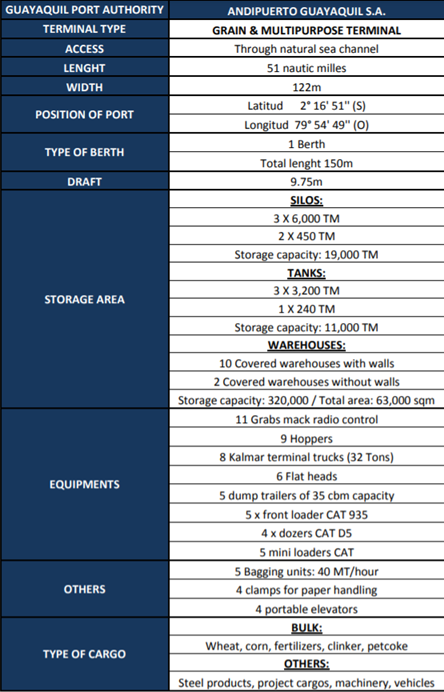
Port Trinitaria, Trinipuerto S.A.
|
Access |
Canal Santa Ana |
|---|---|
|
Deep |
9.75 m |
|
Berth |
1 (largo 125 m) |
|
Warehouse |
14 grain warehouses up to 140,000 MT |
|
Type of Cargo |
Bulk, Cement, Ashes, Petcoke, Soya, Flour |
|
Servicios |
Sistema de Seguridad por circuito cerrado de tv, Sensores Magnéticos instalados. |
|
Certificación |
ISPS Code |

QC Terminales Ecuador Chemical And Oil-Chemical
|
Acceso |
Canal Jambeli |
|---|---|
|
Deep |
6.80 m |
|
Berth |
1 |
|
Warehousing |
Area 24,238 m2 - 56 Tanks |
|
Type of Cargo |
Chemical, Oil |
|
Services |
Operations Monitoring on Real Time Software, Tank Cooling |
|
Certification |
ISPS Code, ISO 9001 |
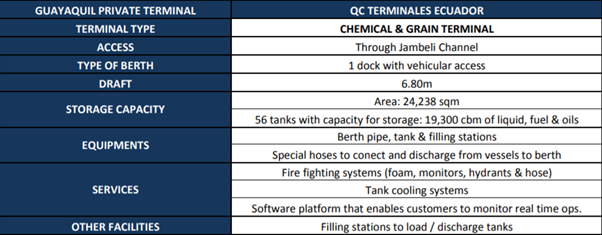
Fertisa Multipurpose Terminal
|
Access |
Canal El Muerto |
|---|---|
|
Deep |
9.75 m |
|
Berth |
1 (lenght 297 m) |
|
Warehousing |
100,000 m2 Containers, General Cargo |
|
Typo of Cargo |
Bananas, Fruits, Fertilizers bulk |
|
Services |
Load Unload, Weight, Ship Repairs Metalworking |
|
Certification |
ISPS Code, ISO 9001, BASC |
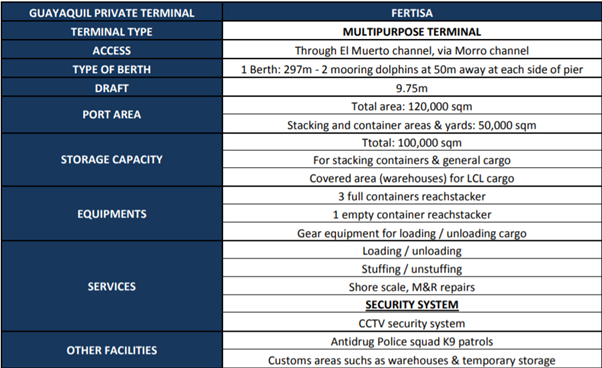
Multipurpose Terminal Bananapuerto
|
Accesss |
Canal Santa Ana |
|---|---|
|
Deep |
9.75 m |
|
Berth |
1 (lenght 320 m) |
|
Warehousing |
4,700 m2 banana palletized & general cargo, 1,700 m2 breakbulk cargo |
|
Type of Cargo |
Banana, Wood, Cold Chain |
|
Services |
Stevedoring Handling, Warehouse and Equipment rental |
|
Certifications |
ISPS Code, ISO 9001, BASC |

Port Handling Equipment
|
Equipment |
Available
|
Total Quantity and Capacity Available |
Comments on Current Condition and Actual Usage |
|---|---|---|---|
|
Dockside Crane |
Yes |
23 Elevators from 50 to 100 tons, for yard operations |
Contecon, in charge of the operation of the terminal, continued with the extension work on the cranes (QC5-QC6). This makes it possible to serve ships with greater draft and greater load. |
|
Container Gantries |
Yes |
6 x Postpanamax ZPMC Ship to Port gantries |
Rail Mounted Gantry (RMG) 2 x 51 tons, |
|
Mobile Cranes |
Yes |
3 |
Equipped with automatic weighing system. |
|
Reachstacker |
Yes |
10 |
Equipped with automatic weighing system. |
|
RoRo Tugmaster (with Trailer) |
Yes / No |
Tracto 25 X 50 Ton
Semi trailer 27 x 40 ton |
The Port Terminal of Guayaquil (TPG), the Chinese electric vehicle manufacturer BYD and the heavy transport company Transcarsell announced the operation of up to 100 100% electric trucks in the port. With the first 20 units, this fleet will operate at the Guayaquil Port Terminal (TPG), on the Trinitarian island. |
|
Grain Elevator with Bagging Machines |
Yes |
2 x 8 MT / hour |
|
|
Transtainer |
N/A |
|
|
|
Forklifts |
Yes |
14 |
From 3 to 25 ton |
Container Facilities
Terminal Contecon
|
TYpe of Cargo |
Yard |
Area (m²) |
|---|---|---|
|
Container |
Nº 1 y 2 |
111365,06 |
|
Container |
Nº 3 |
24099,02 |
|
Container |
Nº 8 |
70790,49 |
|
Bananas |
Nº 9 |
57948,73 |
|
Container |
Nº 300 |
11073,29 |
|
Bananas |
Nº 500 |
6287,39 |
|
Container |
Nº 600 |
10257,06 |
|
Container |
Nº 700 |
20410.80 |
|
Cargo Consolidation & Deconsolidation |
CFS |
28244,78 |
|
Vehicles parking |
Bananero trucks |
30195,99 |
|
Type of Cargo |
Warehouse |
Área (m²) |
|---|---|---|
|
General |
Nº 7 |
7.255,17 |
|
General |
Nº 8 |
7.207,20 |
|
Cold Room (out of order) |
Nº 2 |
4.097,14 |
|
Multipurpose |
Nº 3 |
4.546,64 |
|
Multipurpose |
Nº 4 |
4.546,64 |
|
Multipurpose |
Nº 5 |
4.546,64 |
|
Multipurpose |
Nº 6 |
4.546,64 |
|
Police |
Anti-narcóticos |
1.352,00 |
|
Abandoned Cargo |
Nº 23 |
1.352,00 |
|
Maintenance and Equipment |
Nº 21 y 22 |
2.417,41 |
|
General |
Nº 31 y 32 |
3.853,20 |
|
Banana |
Nº 41 y 42 |
3.911,46 |
|
Banana |
Nº 51 y 52 |
3.903,40 |
|
Banana |
Nº 61-66 |
9.105,69 |
|
Cargo Consolidation & Deconsolidation |
Entre bodega Nº 7 y 8 |
4.218,91 |
|
X Ray screening |
Entre bodega Nº 23 y 24 |
962,00 |
|
HAz-Mats |
Nº 1, 2, 3 |
4.265,44 |
|
Facilities |
20 and 40 ft |
|---|---|
|
Available Container Yard |
See chart |
|
Container Station (CFS) |
See chart |
|
Reefer Container Station |
1,510 positions |
|
Other areas |
N/A |
|
Daily container handling capacity (Cntnrs per hour) |
N/A |
|
Reefer Container Station, connection points |
1,510 plug-in points |
|
Emergency Container Capacity |
N/A |
|
Container Handling x Shift Gang |
N/A |
Customs
For import procedures, the following documentation/information will be required at the service windows of the Billing Department to obtain a gate pass:
The cargo number authorized by SENAE.
For procedures with SENAE authorizations through administrative acts, you must present a copy of the document (Providencia)
Exit Authorization Letter (CAS) (Electronic or Physical)
Copy of the Bill of Lading (BL), for the cases of General Cargo and Loose Cargo
Information of the transport company, or name of the driver and license plate of the vehicle that will collect the load
This documentation will be required by the access control booths before access. The gate pass may also be issued to the customs agent/assistant or other personnel authorized by the importer to carry out customs formalities. The requirements of the “Port Security Manual for the Issuance of Credentials and Provisional Permits” must be met.
For cargo dispatch, warehouses have a scheduled delivery service with assigned shifts, taking into account the following aspects:
Depending on availability, the customer chooses the most convenient shift to pick up their load. Shifts include the earliest and latest pick-up times.
In the event that a client misses their turn (that is, does not arrive at the assigned time), it is possible to request another one the same day at the access control booths.
For cases of Direct Debit (DD) or Advance Clearance (DA), verify that the customs procedure has been authorized and the operation is scheduled in the Customer Service Department.
Customs hours at the port of Guayaquil are from 8:00 am to 12:00 pm and from 1:00 pm to 4:30 pm.
General Cargo Handling Terminals
Terminal Information
The international container terminal consists of three docks of 185 meters each and a storage area of 300,000 m2. The multipurpose terminal includes six 190 berths with 70,000 m2 of storage space, including 4,500 m2 to accommodate dangerous cargo and 3,200 m2 for refrigerated goods.
The Bulk Terminal has a 189 m long dock, three silos and four warehouses to store 3,600 tons. There is also a grain warehouse with a capacity of 30,000 tons and three 9,000 m3 tanks to store heavy liquids such as oil.
Multipurpose terminal
Contecon Muelles Multipropòsito
|
Berth |
Lenght(m) |
Deep (m) |
|---|---|---|
|
Nº 2 |
185 |
10 |
|
Nº 3 |
185 |
10 |
|
Nº 4 |
185 |
10 |
|
Nº 5 |
185 |
10 |
|
Nº 6 |
185 |
10 |
|
Storage Type |
Berth |
|---|---|
|
Bagged Cargo |
Yes |
|
Refrigerated Cargo |
Yes |
|
General Cargo |
Yes |
Main Storage Terminal
At the Contecon Terminal there are well-organized warehouses for both ground operations and classification in tall structures. Products have Contecon barcodes, any item can be identified and located immediately. The surface area of the operational warehouses is 45,800 m2.

Grain Handling Bulk Cargo
Andipuerto Granel ANDIPUERTO is the concessionaire of the multipurpose bulk terminal and the largest dry bulk port facility in Ecuador. The terminal has an area of 13 hectares; it has a dock where ships up to 220 meters in length are received.
Andipuerto Bulk Terminal Tariff Andipuerto Tarifario
|
Berth |
Lenght |
Deep |
|---|---|---|
|
Nº 1D |
155 m |
10 m |
|
Location |
Equipment |
Quantity |
Capacity |
|---|---|---|---|
|
Berth |
Hydraulic Forklift |
7 |
3 x 6m³; 3 x 10 m³, and 1 x 12m³ |
|
Payloaders |
4 |
|
|
|
Hoppers |
5 |
1 x 40m³ and 4 x 20m³ |
|
|
Tansport |
Terminal tractors Ottawa |
8 |
32 Ton. |
|
Hoppers |
5 |
35 Ton |
|
|
Platforms |
6 |
40’ |
|
|
Almacenes |
Grain Elevator |
2 |
8 Tm/h |
|
Forklifts |
14 |
From 3 to 25 Tons. |
|
|
Bulk grain scoop |
4 |
3.5 Ton. |
|
|
Warehouse forklift |
4 |
|
|
|
Front payloader |
5 |
Caterpillar Model 938G II |
|
|
Mini Forklift |
5 |
Cat y Bobcat Model 287B , 242B |
|
|
Tractors |
4 |
Cat Model D5G/LGP |
|
|
Bagging system |
8 |
|
|
Type of Cargo |
Warehouse |
Area (m²) |
|---|---|---|
|
Multipurpose |
Delta |
4.278,00 |
|
Delta 2 |
3.864,00 |
|
|
Delta 3 |
1.122,00 |
|
|
Delta 4 |
918,00 |
|
|
Echo |
5.040,00 |
|
|
Echo 2 |
5.040,00 |
|
|
Fox |
9.072,00 |
|
|
Golf |
9.504,00 |
|
|
Hotel |
9.072,00 |
|
|
Juliet |
8.000,00 |
|
|
Duomo y Anexo |
8.300,00 |
|
Type of Cargo |
Tank |
Quantity |
Capacity |
|---|---|---|---|
|
Liquid Bulk |
Steel |
3,00 |
3200 Ton |
|
|
|
1,00 |
240 Ton |
|
Type of Cargo |
Silos |
Quantity |
Capacidad |
|
Grain Dry |
Acero |
3,00 |
6000 Ton |
|
2,00 |
450 Ton |
||
|
Type of Warehousing |
Number of Facilities |
Area (m2) |
|
|
Bagged Cargo |
4 wrhses 8 bagging machines |
2,160 |
|
|
Cold Cargo |
N/A |
|
|
|
General CArgo |
40 |
103,000 |
|
Stevedoring
The Port of Guayaquil offers the stevedoring and unloading service. The port has adequate equipment and material, duly certified, which guarantees safety and efficiency in cargo handling. Various types of cargo are handled such as containers, agricultural products, general cargo, vehicles, machinery and project cargo. The stevedoring operation is carried out by private companies, classified and regulated by the National Government. The list and ranking of operators is carried out according to the type of activities and services they provide to the terminals (cargo handling, pilotage, towing, dredging, port storage and other activities).
Hinterland Information
By landway
In banana export alone there is a weekly movement of around 1,500 trucks that transport the fruit from Guayas and the Los Ríos Association. The actual cost of the land cost from the Port of Guayaquil to the factories located within the city for 20 and 40 foot dry containers is around USD 180 and USD 250 respectively with a distance of about 15 km. The distances to the main provinces of origin and destination of cargo from the Port of Guayaquil are: Guayas 136km: Guayaquil, Durán, Milagro, La Libertad (136 km.) 11 Manabí 280km: Manta (193km), Jipijapa (254 km. ), Bahía de Caráquez (280km) El Oro 280km: Puerto Bolívar (193km) Pichincha 415 km: Sto. Domingo (287km), Quito (415km) Loja 415km: Loja (415km)
By sea
Ecuador has implemented the maritime security requirements contained in Chapter XI-2 of the International Convention for the Safety of Life at Sea of 1974 and the International Code for the Protection of Ships and Port Facilities (ISPS) through the Merchant Marine Law of 2004 and the Maritime Protection Regulations of 2004. These regulations apply to all seaports in Ecuador and to passenger ships, cargo ships of 500 GRT or more and mobile offshore drilling units on voyages. international.
Port Security
The port of Guayaquil has been the subject of a modernization and improvement program in recent years after a significant financial investment. However, these developments have not resulted in a safer environment for foreign ships, moored along the port's docks or transiting its narrow river passages, which are said to be easy targets for local criminal gangs. While Ecuador has not traditionally been known as a global piracy hotspot, the number and malice of recent attacks on vessels has led the IMB to issue a warning to vessels transiting the river passage in Guayaquil, Ecuador.
The warning comes after a series of incidents in which armed robbers approached and boarded vessels, including those under pilotage. The majority of incidents are reported to have taken place at night between the sea buoy and the entrance and/or exit of the channel. Tactics employed by criminals include shooting at ships to distract crew and allow drugs to be smuggled on board, especially in containers.2
Ecuador has implemented the maritime security requirements contained in Chapter XI-2 of the International Convention for the Safety of Life at Sea of 1974 and the International Code for the Protection of Ships and Port Facilities (ISPS) through the Merchant Marine Law of 2004 and the Maritime Protection Regulations of 2004. These regulations apply to all seaports in Ecuador, as well as passenger ships, cargo ships of 500 GRT or more and mobile offshore drilling units on international trips.
Comprehensive security: The Port of Guayaquil is qualified with the International Code for the Protection of Ships and Port Facilities (ISPS), Zero Theft and the Business Alliance for Secure Commerce (BASC) Certification, in the process of ISO 9,000 and 28,000 certifications.
Security Level
1 applies in territorial waters and maritime ports of Ecuador. Any change in the level of security or its area of application will be communicated through notices to mariners, nautical advisories, circulars, VHF communication or any other appropriate means.
-
Centro de denuncia de piratería de la IMB (IMB PRC) imbkl@icc-ccs.org / piracy@icc-ccs.org. Roberto Barriga Maldonado de Larrea Canessa Barriga Abogados con sede en Guayaquil, Ecuador
|
Security |
|
|---|---|
|
ISPS Compliant |
Yes |
|
Current ISPS Level |
1 |
|
Police Boats |
Yes |
|
Fire Engines |
Yes |
Ecuador - 2.1.3 Port of Manta
Port Overview
The biggest advantage of the port of Manta is the depth of the water and easy access to berths. The port is designed to handle 2 million tonnes of cargo, 50,000 TEUs and around 60,000 vehicles per year. However, it lacks modern ship-to-shore cargo handling equipment and few covered storage facilities. The geographically central position of Manta is advantageous for the distribution of vehicles both to the north and south of the country, it is also the ideal geographical point to develop a port terminal for post-Panamax ships, because it is in the center of Ecuador, opposite to Asia.
The Port of Manta is divided into two main terminals: 1) International Terminal and 2) Fishing and Cabotage Terminal. It also has two private port terminals and three fishing facilities under the same administration in its jurisdiction. Its dock is 110 hectares protected by a breakwater that allows a quick and practical operation for the arrival, loading and unloading of vessels. Being a Multipurpose Port, the facilities facilitate access for all types of vessels, guaranteeing easy maneuvering of vessels and loading, unloading and supplying operations.
The main export product sent from Manta is fish. Shrimp, tagua, plastic and stationery are also exported. On the other hand, the terminal receives more than 95% of car imports from Ecuador.
Manta-Manaus multimodal axis
In the near future, the Port will have a direct connection to the various projects planned within the Manta-Manaus multimodal axis also known as the Central Logistics Corridor of Ecuador. This is articulated with the Manta airport development project, the Special Development Zone, ZEDE, road initiatives such as the Manta-Quevedo and Manta-Guayaquil highway and the new accesses to the Port.
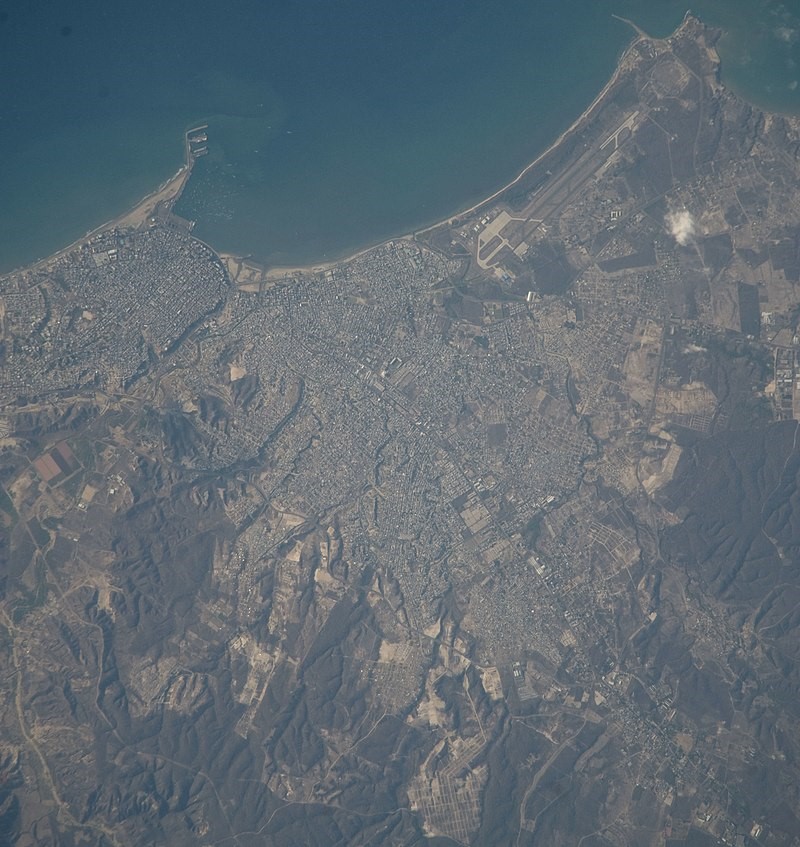
Source: JSC Gateway to Astronaut Photography of Earth
The main economic activity of Manta consists of the capture and processing of tuna. The intense port movement in the Fishing and Cabotage Terminal, the same one that during 2022 mobilized 72,475.87 metric tons of industrial fishing landed in 268 vessels. In fact, one of the very important factories in the province is Conservas Isabel. The companies that bring together the largest number of Manabi workers are the tuna companies Inepaca, Conservas Isabel, Seafman, Tecopesca and Marbelize. Between 800 and 1,200 workers work there. Manta being the main fishing port of Ecuador, called the “Tuna Capital of the World” due to its high percentage of capture, unloading and processing of tuna from the Fishing and Cabotage Terminal of the port of Manta, has made Ecuador one of the 6 main countries worldwide that capture the tuna resource, according to a report from the Ministry of Foreign Trade, Aquaculture and Fisheries
The Manta Fishing and Cabotage Terminal has an extension of more than 620 linear meters of dock for the service of the artisanal and industrial fishing sector. Very soon this dock capacity will increase with the construction of two jetty-type docks. As it is an open port, it has the protection of a breakwater along its entire length against waves and wind, which guarantees and facilitates maritime-port operations.
Port website: : https://www.puertodemanta.gob.ec/
http://www.camae.org/puerto/autoridad-portuaria-de-manta-apm/
https://www.instagram.com/aportuariamanta/?hl=en
Key port information may also be found at: http://www.maritime-database.com
|
Port Location and Contact |
|
|---|---|
|
Country |
Ecuador |
|
Province or District |
Manabí |
|
Nearest Town or City with Distance from Port |
Manta (4.2 km) |
|
Port's Complete Name |
Port of Manta |
|
Latitude |
-0.959722 |
|
Longitude |
-80.71722 |
|
Managing Company or Port Authority
|
Manta Port Authority |
|
Management Contact Person |
Ronald Lizandro Muñoz (from 27/06/2023) |
|
Nearest Airport and Airlines with Frequent International Arrivals/Departures |
Eloy Alfaro International Airport. It is located on the shores of the Pacific Ocean in the city of Manta. Due to its strategic location, the Eloy Alfaro Air Base and the Manta Naval Air Station operate on the runway of this airport. |
Port Picture
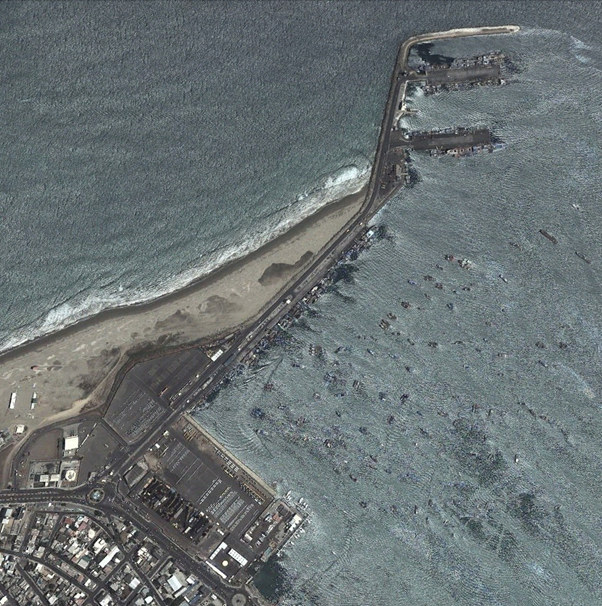
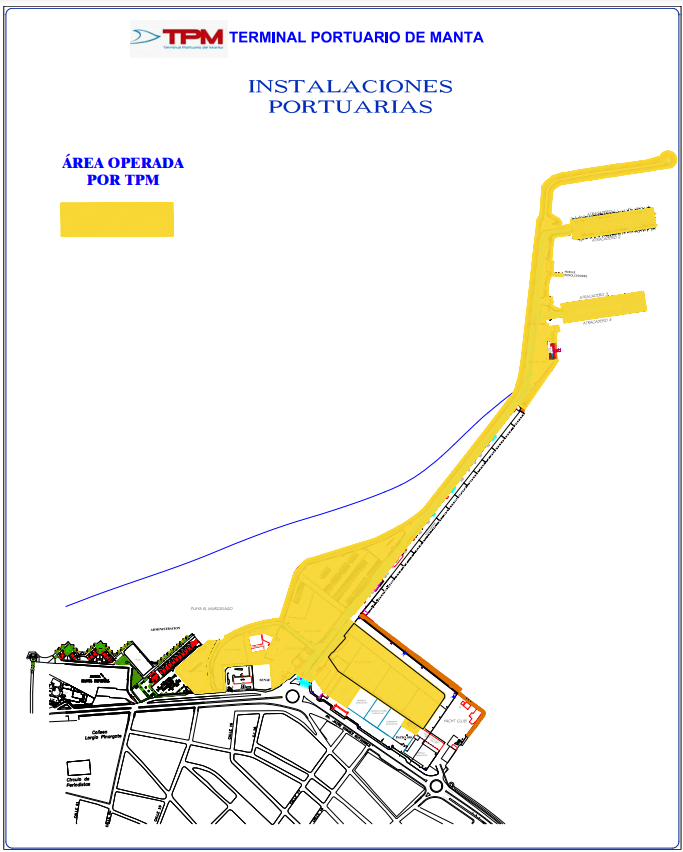
Description and Contacts of Key Companies
http://www.puertodemanta.gob.ec/wp-content/uploads/2017/08/OPERADORES-PORTUARIOS.pdf
For more information on port contacts, please see the following link: 4.4 Port and Waterways Companies Contact List.
Port Performance
The port has a storage area of 150,500 m2 divided into 12 warehouses for storage of containers, vehicles and general cargo. It has capacity for about 5,000 TEU or 4,000 vehicles.
Currently, solid dry bulk cargo and international fishing predominate in the total cargo moved in the Port of Manta with approximately 65% of the total. This category includes exports and imports of tuna, wheat and other frozen cereals. On the other hand, general cargo such as automobiles, machinery and equipment, vehicles, assembly parts, etc., represents 11% of the total; while 24% corresponds to liquid bulks such as vegetable oils and hydrocarbons.
It has two docks, one 200 meters long and the other 300 meters long, with the capacity to receive 4 vessels simultaneously, that is, 800 linear meters of berths for the operation of container ships, bulk carriers, carts, fishing vessels and cruise ships. . . Both docks have a platform width of 45 meters each. It also has another 620 linear meters for exclusively fishing and cabotage activities.
In 2022, 106,515 units of vehicles and machinery were serviced between import, export and transhipment, which represented 53% compared to 2021 (69,571 units); while liquid bulk -vegetable oils- had an increase of 17%.
In the Port of Manta, three projects will be executed for a total of USD 10 million, which include the expansion of International Pier number 2 by an additional 60 meters, the construction of multipurpose warehouses and the enlargement of the monitoring center (CCTV).
|
Seasonal Constraints |
||
|---|---|---|
|
|
Occurs |
Time Frame |
|
Rainy Season |
Yes |
From December to March. It rains between 150 to 250 mm³ annually |
|
Major Import Campaigns |
No |
|
|
Other Comments |
This area, due to the direct influence of the Cold Humboldt Current most of the year, is very dry and rainfall is extremely scarce. Unlike the rest of the Ecuadorian coast, whose climate is extremely hot, rainy and humid par excellence, the climate of Manta is very different, due to its geographical location in the Center – South of Ecuador. |
|
|
Handling Figures for 2022 |
|
|---|---|
|
Vessel Calls |
700 international and ECU ships,
(2021, 515 Intl and Ecu ships; 2020 186 ships) |
|
Container Traffic (TEUs) |
6500 containers in 2022.
(2021 8,019 TEU's, 3,548 TEU's impo and 4,471 TEU's expo with average of 169 TEU's per vessel)
|
|
Handling Figures Bulk and Break Bulk for 2022 |
|
|---|---|
|
Bulk (MT) |
Total Bulk and Loose Cargo 1,096,317 MT 2022
(1,168,534 MT served in 2021; 1,013,000 MT in 2020)
(463,333 MT in 1st half of 2023) |
|
Break bulk (MT) |
See previous figure |
Additional note: The Fishing and Cabotage Terminal mobilized 72,475.87 metric tons of industrial fishing landed in 268 vessels in 2022
Discharge Rates and Terminal Handling Charges
For detailed information on rates visit: https://www.tpm.ec/servicios-generales/
Berthing Specifications
Container, bulk and Ro-Ro operations can be carried out at berths with a 12m draft, allowing vessels with a draft of 11m. For RoRo vessels that only have a stern ramp, there are two dock ramps, at the end of each side of the first (inner) dock. Boats can approach to starboard or port, but the tidal range of approximately 3 meters should be considered when working on a fixed concrete ramp.
|
Type of Berth |
Quantity |
Length (m) |
Maximum Draft (m) |
Comments |
|---|---|---|---|---|
|
Conventional Berth |
2 |
200m x 45m w) |
|
Two 200-meter-long jetty-type docks with the capacity to receive 4 vessels simultaneously, that is, 800 linear meters of berths for the operations of container ships, bulk carriers, tankers, fishing vessels and cruise ships.
Both docks have a platform width of 45 meters each. |
|
Container Berth |
Yes |
185m |
10m |
|
|
Silo Berth |
Yes |
N/A |
15m |
|
|
Berthing Tugs |
Yes |
1 |
|
|
|
Water Barges |
N/A |
|
|
Water supplier https://www.searates.com/port/manta_ec |
TPM has 2 jetty docks, one of 200 meters and the other that was extended by 100 meters, leaving 300 meters in length, which in turn offer 4 berths totaling 1000 linear meters capable of receiving four large vessels at the same time (commercial, tourism, fishing, etc.) simultaneously, that is, intended for the operations of container ships, bulk carriers, tankers, fishing vessels and cruise ships. Both docks have a platform width of 45 meters each and an average depth of 12.5 meters (MLWS).
DOCK 1:
Length: 200 meters. Width: 45 meters. Area: 9000 square meters
Berth 1: Depth: 11 meters Cargo: All types of ship
Berth 2: Depth: 12.5 meters Cargo: All types of ship
DOCK 2:
Length: 300 meters. Width: 45 meters Area: 9000 square meters
Berth 1: Depth: 12.5 meters. Cargo: All types of ship
Berth 2: Depth: 12.5 meters Cargo: All types of ship
SUPPLIES
Provisions: Yes
Bunker: Yes.
Water: Yes
Lubricants: Yes
Engines, parts: Yes
https://www.searates.com/port/manta_ec
General Cargo Handling Berths
Services
A) Solid Bulks (Wheat, corn, soybean paste, urea, klinker, Pet coke) National and International Fisheries
Unloading cereal to truck • Direct unloading of frozen fish • Port area operation by crane • Use of Infrastructure for dry bulk • Use of Infrastructure for fishing
B) Liquid Bulks (Fatty oils, sunflower, olive, caustic soda, biodiesel)
• Loading/Unloading of liquid bulk from/to truck • Port area operation by crane • Use of Infrastructure for liquid bulk
C) Refrigerated and Dry Containers
• Loading and unloading of full container • Loading and unloading of empty container • Loading of full container transshipment • Container re-stacking • Crane movement (hold lids and removals) • Power connection of refrigerated containers for export • Power connection of containers refrigerated import • Container storage • Positioning and transfer for container inspection • Return inspection to container yard • Reception and delivery of full containers • Late arrival of containers • Transportation of full containers • Reception and delivery of empty containers • Shipping services support for the physical inspection of containerized merchandise • Consolidation and deconsolidation • Import weighing • Import seals
D) Vehicles, Machinery
Loading and Unloading of vehicles of equal or less than 3 tons • Loading and Unloading of vehicles of more than 3 tons • Reloading of vehicles less than 3 tons to the dock • Reloading of vehicles less than 3 tons on board • Movement of vehicles greater than or equal to to 3 tons • Movement of vehicles less than 3 tons • Tray • Fuel tanking • Vehicle storage • Reception and delivery of vehicles
E) General Cargo
Loading and unloading of general merchandise • Storage of general merchandise • Positioning for inspection of general merchandise • Return of inspection of general merchandise • Reception and delivery of general merchandise • Support services for the physical inspection of loose general merchandise
|
Cargo Type |
Berth Identification |
|---|---|
|
Imports - Bagged Cargo |
N/A |
|
Exports - Bagged Cargo |
N/A |
|
Imports and Exports - RoRo |
N/A |
|
Other Imports |
In Imports, Ro-Ro Cargo Vessels arrive at the Port, General Cargo such as Iron, steel and other metals, various machines and equipment and parts for vehicle assembly, as well as containerized cargo with Tuna, Chemical Compounds and Various Preserved Foods. |
Port Handling Equipment
TPM currently has the following port equipment:
• 5 Tract trucks
• 5 Platforms
• 1 3 ton forklift
• 2 Reach Stackers Container Ships (Full Containers)
• 1 Reach Stacker Container Machine (Empty Containers)
• 4 Scales
• 60 Reefer Shots
• 2 Mobile Port Crane (G HMK)
• 4 Hoppers capacity 50 cubic meters
• 4 SMAG Lifting Technologies Peiner Spoons capacity 12 cubic meters
|
Equipment |
Available
|
Total Quantity and Capacity Available |
Comments on Current Condition and Actual Usage |
|---|---|---|---|
|
Dockside Crane |
Yes |
Gottwald Kone Crane HMK 41mt |
|
|
Container Gantries |
No |
|
|
|
Mobile Cranes |
Yes |
Gottwald Kone Crane HMK 41mt |
|
|
Reachstacker |
Yes |
Reach stackers 40 tons, 2 x Kalmar (45 mt) Full cntnr. 1 x Kalmar 9 (mt) Empty cntnrs only |
|
|
RoRo Tugmaster (with Trailer) |
Yes |
5 “Ottawa” tracto/trailers |
|
|
Grain Elevator with Bagging Machines |
No* |
|
4 Hoppers 50m3
4 Peiner scoop* SMAG Lifting Technologies cap12m3
|
|
Transtainer |
No |
|
|
|
Forklifts |
Yes |
Forklift 3 TM, Forklift 7 TM |
|
(*)Institutional Video unloading bulk cargo at Port of Manta: https://youtu.be/btutNgnecPE
Container Facilities
The Gottwald mobile crane can support the entire unloading process, but to be able to work with more than one group it is necessary to use ship rigging (Self Sustained Cranes). A port user reported that the mobile crane is often out of service. Once unloaded, the containers must be transported by truck for approximately 1.5 km to the storage yard.
|
Facilities |
20 ft & 40 ft |
|---|---|
|
Container Facilities Available |
Yes |
|
Container Freight Station (CFS) |
Yes |
|
Refrigerated Container Stations |
60 Reefer outlets |
|
Other Capacity Details |
4 scales |
|
Daily Take Off Capacity |
N/A |
|
Number of Reefer Stations |
60 outlets |
|
Emergency Take-off Capacity |
N/A |
|
Off take Capacity of Gang Shift |
N/A |
Customs Guidance
For import procedures, the following documentation/information will be required at the service windows of the Billing Department to obtain a gate pass:
The cargo number authorized by SENAE.
For procedures with SENAE authorizations through administrative acts, you must present a copy of the document (Providencia)
Exit Authorization Letter (CAS) (Electronic or Physical)
Copy of the Bill of Lading (BL), for the cases of General Cargo and Loose Cargo
Data from the transport company, or name of the driver and license plate of the vehicle that will pick up the load.
This documentation will be required by the access control booths before access. The gate pass may also be issued to the customs agent/assistant or other personnel authorized by the importer to carry out customs formalities. The requirements of the “Port Security Manual for the Issuance of Credentials and Provisional Permits” must be met.
For cargo dispatch, warehouses have a scheduled delivery service with assigned shifts, taking into account the following aspects:
Depending on availability, the customer chooses the most convenient shift to pick up their load. Shifts include the earliest and latest pick-up times.
In the event that a client misses their turn (that is, does not arrive at the assigned time), it is possible to request another one the same day at the access control booths.
For cases of Direct Debit (DD) or Advance Clearance (DA), verify that the customs procedure has been authorized and the operation is scheduled in the Customer Service Department.
Terminal Information
Malecón Avenue, Jaime Chávez Gutiérrez S/N and 20th Street (next to the entrance to the port) Blanket
(+593) 5 370 2490 ext. 5100
The Terminal has a registry of registered Land Transport Operators. For more information see: https://www.tpm.ec/operadores-de-transporte-terrestre/ y https://tpm.ec/wp-content/uploads/2022/07/Copia-de-BASE-OTT18072022.pdf
MULTIPURPOSE TERMINAL
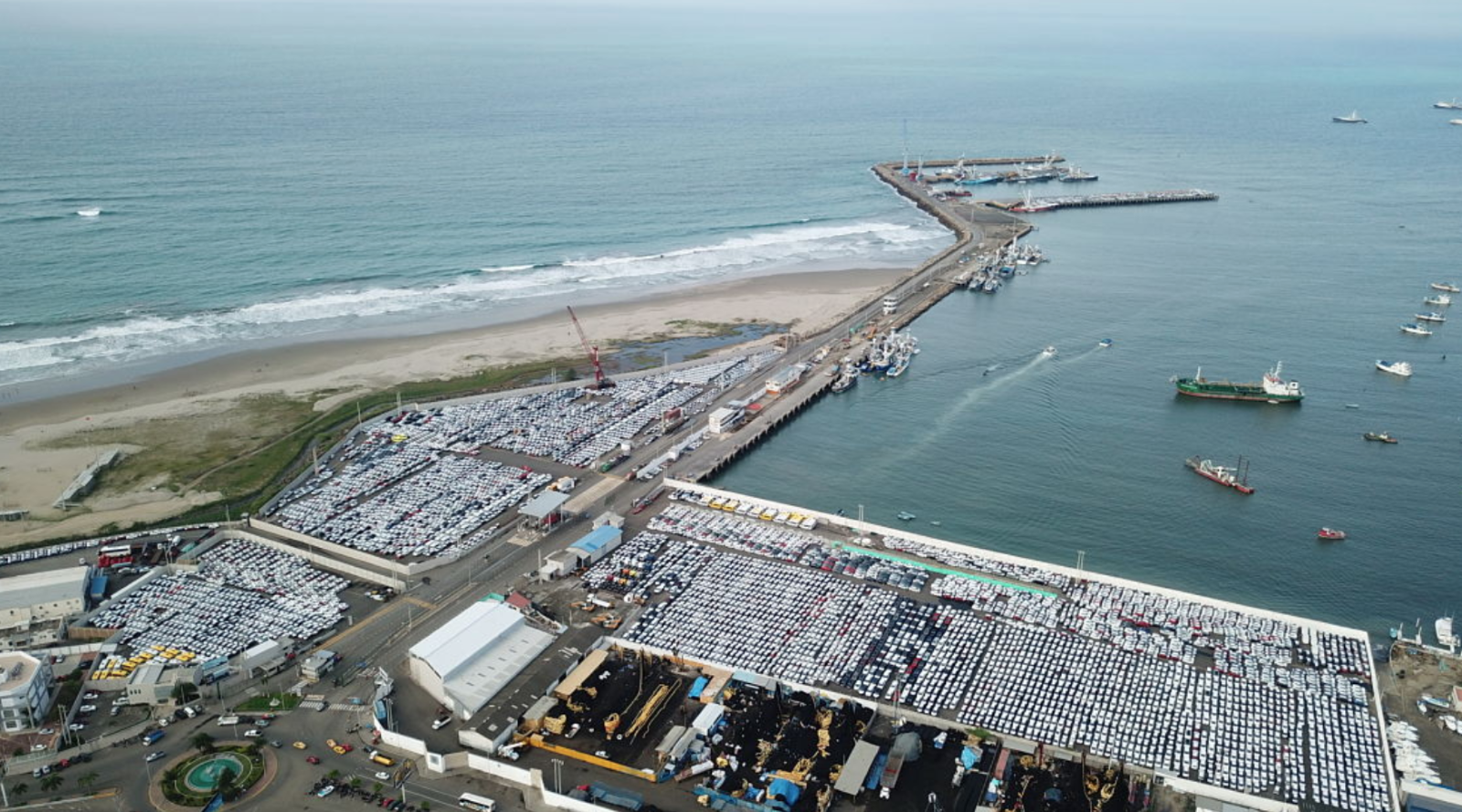
Photo: Courtesy TPM
The Port of Manta is considered multipurpose; In other words, it can serve various market segments; Today, its international terminal, delegated to the company Manta Port Terminal (TPM), moves solid bulk cargo (wheat, urea and fish), liquid bulk (vegetable oils) and general cargo (machinery and vehicles); Meanwhile, the Port Authority of Manta, in charge of the administration of the Fishing and Cabotage Terminal, serves the industrial and artisanal fishing fleet; In addition, it has been making important investments in infrastructure to rebuild said terminal and recover port and fishing activity in the city of Manta, an objective that has been achieved with the help of the Ministry of Transportation and Public Works, with whom efforts are intensified to have with new pier-type docks that will double the capacity to serve the fishing fleet in terms of linear meters for docking vessels at 10, 9 and 7 meters draft; enabling more than 620 linear meters of access roads to the fishing terminal to facilitate port operations.
GRAIN AND BULK HANDLING
For the unloading manoeuvre it is necessary to use the ship's rigging (self-unloading peiner scoop). Best case: practical size bulk carrier of approximately 40,000 TDW, 4 to 5 hatches. The port has sufficient hoppers into which the cargo is unloaded; trucks pass underneath to take the cargo to a warehouse outside the dock.
Institutional Video unloading bulk cargo at the Port of Manta: https://youtu.be/btutNgnecPE
MAIN STORAGE TERMINAL
For the storage of containers, vehicles and general cargo, there is a total area of 110,500m2, divided into 7 different patios. Depending on the type of cargo, it has capacity for 5,010 TEU or 4,240 vehicles (passenger cars).
TPM has two yards for storage of different types of cargo such as vehicles, containers, general cargo, dangerous cargo, and bulk cargo.
-
PATIO 600: 32,768.57 m2
-
PATIO 500: 30,731.34 m2
-
PATIO 200: 8,020.55 m2
-
PATIO 800: 11,706.26 m2
|
Storage Type |
Number of Storage Facilities |
Area (m2) |
|---|---|---|
|
Bagged Cargo |
7 |
110,500m2 TOTAL |
|
Refrigerated Cargo |
N/A |
- |
|
General Cargo |
5 |
- |
Stevedoring
Cargo Operators are registered companies that provide services in the Port of Manta, whose services allow the management and execution of specialized technical activities for the transfer of loading and unloading carried out on ships/vessels; loading, unloading, storage, warehousing, mobilization services in the port area, stowage, re-stowage and unloading, etc. Port cargo operators have specialized machines, equipment, tools and safety implements for their properly trained and specialized workers.
Hinterland Information
Malecón Avenue, Jaime Chávez Gutiérrez S/N and 20th Street (next to the entrance to the port) Blanket
(+593) 5 370 2490 ext. 5100
The Terminal has a registry of registered Land Transport Operators. For more information consult:
https://www.tpm.ec/operadores-de-transporte-terrestre/ and
https://tpm.ec/wp-content/uploads/2022/07/Copia-de-BASE-OTT18072022.pdf
ACCESS TO THE PORT AREA
Access to the port facilities is through Jaime Chávez Gutiérrez Avenue (Malecón) and 4 de Noviembre Avenue, which is 4 km long and connects the port with the routes to Quito and Guayaquil. The lateral passage, 18 km long, interconnects the port with the Manta - Rocafuerte - Quito road; Manta - Montecristi - Jipijapa - Nobol - Guayaquil, built to decongest vehicular traffic. The 8.5 km long Puerto - Airport road forms the peripheral ring with the lateral passage and connects with the Manta-Montecristi-Guayaquil highway. The Coastal Route connects the port of Manta with all the tourist sites in Ecuador. The Avenue of Culture is quickly interconnected with the lateral passage allowing quick mobilization towards the road to Portoviejo.
ACCESS TO THE SERVICE AREA
Dock access rules
Access to the docks and traffic areas of the ports, to people and vehicles that, due to their functions or services therein, are duly authorized. It is the responsibility of the maritime authority and/or whoever has jurisdiction to grant these authorizations to passengers and other people boarding the ships, as well as to the crew of the ships in port. It is the responsibility of the APM to grant access authorizations to all types of vehicles and people involved in the execution and conservation of works and facilities, in loading, unloading operations, circulation in the docks and everything related to the use of the different works intended for them. to port operations. Non-public servants who depend on the authorities who, due to their function, must enter the port, will be provided with sufficient documentation, and must show said documentation to the guards and security when required to do so.
Industrial vehicles and machinery.
The access of industrial vehicles and mobile machinery will be authorized in each case by the Comprehensive Security Directorate of the APM, which may control the characteristics and state of conservation and operation, in accordance with the provisions of the ISPS Code and/or BASC, without any liability arising for the APM or its staff, in the event of an accident.
MOVING AROUND THE SERVICE AREA
Vehicles
Vehicles of all types that circulate through the port must do so with due precautions and respecting existing traffic signs. When crossing the tracks or stopping on them to take or leave cargo, in cases where this is not expressly prohibited, they will do so with the driver being willing to remove it from the road as soon as necessary. The unit loads per axle, as well as the tire inflation pressure, will not be higher than those established by national road standards or specific standards issued by the Ministry of Transportation and Public Works, MTOP. The exhaust pipes of internal combustion engines will be closed or explosion-protected type. The circulation of light vehicles (cars, motorcycles, etc.) is prohibited due to the loading and unloading area, understood as that located under the radius of action of cranes and other facilities for handling goods. Vehicles will not be allowed to travel through the general circulation areas of the docks and service roads at speeds greater than 60 kilometers per hour, nor through other places other than the roads intended for their transit.
Port Security
Ecuador has implemented the maritime security requirements contained in Chapter XI-2 of the International Convention for the Safety of Life at Sea of 1974 and the International Code for the Protection of Ships and Port Facilities (ISPS) through the Merchant Marine Law of 2004 and the Maritime Protection Regulations of 2004. These regulations apply to all seaports in Ecuador, as well as passenger ships, cargo ships of 500 GRT or more and mobile offshore drilling units on international trips.
Security Level 1 applies in territorial waters and maritime ports of Ecuador. Any change in the level of security or its area of application will be communicated through notices to mariners, nautical advisories, circulars, VHF communication or any other appropriate means.
|
Security |
|
|---|---|
|
ISPS Compliant |
Yes |
|
Current ISPS Level |
1 |
|
Police Boats |
Yes |
|
Fire Engines |
Yes |
Ecuador - 2.1.4 Port of POSORJA (Guayaquil Area)
Port Overview
The Posorja Smart Deep Water Port has a privileged geographical location on the west coast of the South Pacific and its expeditious maritime access channel with a depth of 16 meters, which allows the entry of Neo Panamax vessels with a capacity of up to 15,000 TEU, the largest in the shipping industry.
The Container Port Performance Index (CPPI) places the Smart Deep Sea
Water Puerto de Posorja in the Top 10 efficient ports in South America, Central America and the Caribbean.
Through this Port, Ecuador connects directly with the main markets of
Northern Europe, Asia, Mediterranean, Caribbean, Central America and the west coast of South America.
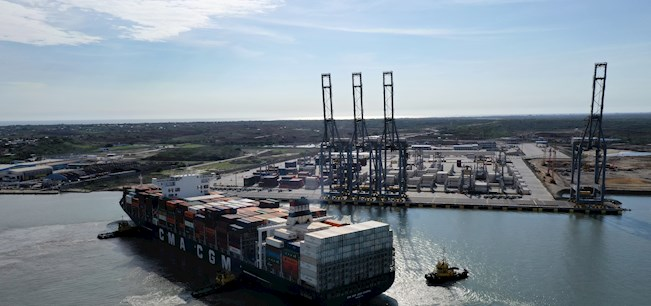
Courtesy https://www.dpworld.com/es/ecuador
Port website: https://www.dpworld.com/es/ecuador
Key port information may also be found at: http://www.maritime-database.com
|
Port Location and Contact |
|
|---|---|
|
Country |
Ecuador |
|
Province or District |
Guayas |
|
Nearest Town or City with Distance from Port |
Guayaquil, 85km |
|
Port's Complete Name |
Posorja Deep Waters Port |
|
Latitude |
-2.7081505, |
|
Longitude |
-80.24097 |
|
Managing Company or Port Authority |
DP World Posorja https://www.dpworld.com/es/ecuador |
|
Management Contact Person |
Carlos Merino, CEO de DP World Ecuador Port Operator, FCL +593 4 380 4850 dpworldposorja.com.ec |
|
Nearest Airport and Airlines with Frequent International Arrivals/Departures |
José Joaquín de Olmedo International Airport
American Airlines, Avianca, Copa Airlines, Iberia, KLM, LAN, Air Europa, Latam, TACA, TAME, UPS |
Port Picture
Description and Contacts of Key Companies
|
Compañia |
Servicios |
Contacto |
Correo electrónico/ Website |
|---|---|---|---|
|
Andipuerto Guayaquil S.A. |
Multipurpose grain terminal, bulk |
||
|
Aretina |
Port Logistics Operator FCL, bulk, warehouse, container yard |
||
|
Contecon Guayaquil S.A. |
Port Terminal Operator |
+593 4 600 6300 |
|
|
DPWorld Posorja |
Port Operator, FCL |
+593 4 380 4850 |
|
|
Ecuaestibas S.A. |
Tugs, berthing |
+593 042 517 360 |
|
|
M&C Surveyors |
Consultancy and surveying services to the marine, commodities and insurance sectors |
+51947245898 |
|
|
Petrocomercial |
Fuel, bunkering, greases, oil products |
043803000 |
|
|
Puerto Trinitaria - Trinipuerto S. A |
Support Activities for Rail Transportation |
+593 4 269 7244 |
|
|
QC Terminales Ecuador |
Port Terminal, Bulk oil, chemical, warehouse |
||
|
Setmabas S.A. |
Ship services, technical support and supplies |
+593 4-202-8158 |
|
|
Terminal Portuario de Guayaquil TPG |
Port Terminal, FCL |
Port Performance
2019 Start of operations
- The aspiration of DP World Posorja in its first year of operation is to move 250,000 to 300,000 teus. Due to its draft level, its projection is to receive neo-post-Panamax vessels, 330 meters in length and which usually carry around 10,000 teus.
- Has handled thousands of containers and more than 40 Post-Panamax vessels. Posorja is expected to receive an annual volume of 750,000 TEUs during the first phase, and 1.5 million TEUs at full port capacity.
2021
- The new record was achieved after the docking of the container ship “Jean Gabriel”, of the CMA CGM shipping company, a 299-meter-long ship, which after an efficient operation, set sail on March 31, 2021 with a draft of 14. 48 meters, this being the vessel with the greatest depth that has left Ecuador.
- DP World Posorja confirms its leadership in offering cutting-edge technology with the international recognition granted by Furukawa Electric and which places it as one of the ports with the greatest technology on the west coast of South America.
2022
- DP World Posorja (Guayaquil) once again stands out for its operational efficiency, productivity and service, ranking No. 19 globally and 2nd. in the region of Central and South America and the Caribbean, according to the world ranking Container Port Performance Index 2022 CPPI By Region 2022 (CPPI), prepared and published by the World Bank and S&P Global Market.
- In less than three years of operations, DP World Posorja is already located in the top 10 of efficient ports in South America, Central and the Caribbean
- Capture of 30% of the banana export market, which goes to northern Europe.
- DP World Posorja, responsible for the Posorja Deepwater Port, set records in productivity figures at the regional level, reaching movements of up to 47.1 containers per hour. This translates into each crane loading or unloading 47.1 containers every hour.
- The deep-water Guayaquil port in Posorja marks a new milestone: having reached 1 million TEUs mobilized since the beginning of its operations in August 2019, under a high level of port security and efficiency.
Seasonal Constraints
|
Occurs |
Time Frame |
|
|---|---|---|
|
Rainy Season |
Yes |
From December to March |
|
Major Import Campaigns |
No |
|
|
Other Comments |
||
|
Handling Figures for 2022 |
|
|---|---|
|
Vessel Calls |
Data not available https://www.dpworld.com/en/ecuador/our-services/ports-and-terminals/dp-world-posorja |
|
Container Traffic (TEUs) |
55,000 TEU’s ( installed capacity x year) |
|
Handling Figures Bulk and Break Bulk for 2022 |
|
|---|---|
|
Bulk (MT) |
N/A |
|
Break bulk (MT) |
N/A |
Discharge Rates and Terminal Handling Charges
Photo: Courtesy DP World Posorja
For information on rates please see: https://www.dpworld.com/en/ecuador/information/rates
Berthing Specifications
|
Type of Berth |
Quantity |
Length (m) |
Maximum Draft (m) |
Comments |
|---|---|---|---|---|
|
Conventional Berth |
Mo |
|
||
|
Container Berth |
Yes |
400m |
15m |
|
|
Silo Berth |
No |
|
||
|
Berthing Tugs |
N/A |
|
||
|
Water Barges |
No |
|
For more information see: https://www.dpworld.com/en/ecuador/our-services/ports-and-terminals/dp-world-posorja
General Cargo Handling Berths
|
Cargo Type |
Berth Identification |
|---|---|
|
Imports - Bagged Cargo |
No |
|
Exports - Bagged Cargo |
No |
|
Imports and Exports - RoRo |
N/A |
|
Other Imports |
Container berth |
Port Handling Equipment
|
Equipment |
Available |
Total Quantity and Capacity Available |
Comments on Current Condition and Actual Usage |
|---|---|---|---|
|
Dockside Crane |
Yes |
4 |
Quay crane Nave-Puerto |
|
Container Gantries |
Yes |
5 |
El puerto está equipado con una infraestructura de clase mundial y cuenta con las grúas pórtico más grandes de Sudamérica. |
|
Mobile Cranes |
Yes |
15 |
Rubber-tire-gantry cranes (RTG). |
|
Reachstacker |
Yes |
||
|
RoRo Tugmaster (with Trailer) |
Yes |
||
|
Grain Elevator with Bagging Machines |
No |
||
|
Transtainer |
Yes |
5 |
|
|
Forklifts |
Yes |
Container Facilities
In 2021, the DP World Logistics Center in Durán completed one year of operation. These facilities are located in a strategic industrial area and have a portfolio of integrated logistics services such as: empty container warehouse, container yard and cargo warehouses.
|
Facilities |
20 ft |
40 ft |
|---|---|---|
|
Container Facilities Available |
17.3 hectares total 20'+40' Annual Installed Capacity of 55,000 TEUs |
|
|
Container Freight Station (CFS) |
40 |
|
|
Refrigerated Container Stations |
2,184 constant temperature monitoring electrical outlets |
|
|
Other Capacity Details |
||
|
Daily Take Off Capacity |
In 2022 record, 47 containers / hour |
|
|
Number of Reefer Stations |
2,184 constant temperature monitoring electrical outlets |
|
|
Emergency Take-off Capacity |
In 2022 record, 47 containers / hour |
|
|
Off take Capacity of Gang Shift |
Cortesía https://www.dpworld.com/es/ecuador
Customs Guidance
IMPORTATION PROCESS
The first step is for all actors to register (transport company/exporter and customs agent if applicable. The instructions for company registration are detailed below: https://www.dpworldposorja.com.ec/download /registro-de-usuarios/ and the link to find the requirements https://www.dpworldposorja.com.ec/requisitos-dponline/.
Note the requirements that you must upload on the DPOnline platform during your registration:
• Updated RUC
• Appointment of the Legal Representative
• ID or Passport of the Legal Representative
• Declaration of Security and Anti-drug Conduct signed by the Legal Representative
• Return for the last month of electricity, water or telephone services
• Sketch of the company address
• Screen print of the registration in Ecuapass: “Customer Support” option
• Modify user registration information.
• Modify foreign trade representative registration information.
• It must include: -Company information – Operation information.
The Anti-drug Safety and Conduct Declaration can be found at this link
After you have the username and password, you must continue with the following steps.
The second step must associate the transport companies with which you work with your profile, instructive detail for that purpose: https://www.dpworldposorja.com.ec/download/sociacion-companies-creacion-usuarios-dependientes/
The third step for the import, you must first invoice the services, consider the following instructions, where you can find the steps to invoice and our collection channel: https://www.dpworldposorja.com.ec/download/facturacion-pagos-estados-cuenta /
The fourth step is to make the import departure appointment. It must be generated when you have an authorized departure by SENAE, CAS of the authorized shipping company and the payment for our services. In this link you will find the instructions that you must follow https://www.dpworldposorja . com.ec/download/creacion-manejo-citations-conteneres/
In addition to the above detailed, I would like to detail the Notices of our company related to export cargo:
Notice of Export Payment Collection Channel https://www. dpworldposorja.com.ec/download/25-noviembre-2021-canales-recaudacion/
Notice of Agility to enter the Port in inspections and/or capacity https://www. dpworldposorja.com.ec/download/12-de-mayo-2022-important-information-entrance-to-the-port-facility-inspections-capacity/
If you have any questions or queries, please contact us in order to provide you with the respective support as soon as possible.
We put at your disposal the Automatic Notification Service, with which you can receive information on the traceability of your container from its entry or unloading to its departure or boarding.
https://www.dpworldposorja.com.ec/download/dponline-servicio-notificaciones- automaticas/
Concerns will be received through the following channels:
Email:servicioalcliente.posorja@dpworld.com Telephone: + 593 4 3806100 – Option 1
Note: For requests after 5:00 p.m., weekends and holidays, please contact + 593 98 075 0099
Terminal Information
MULTIPURPOSE TERMINAL
No
GRAIN AND BULK HANDLING
No
MAIN STORAGE TERMINAL
El centro logístico Duran cuenta con un espacio de 17.3 hectáreas, moderno, amplio y seguro dividido en dos grandes áreas: la primera para consolidación de carga de banano y carga seca como cacao y café; y la segunda, para el depósito de contenedores vacíos.
El espacio destinado para la consolidación de banano tiene 8 bahías de carga y descarga a nivel de la plataforma
En la segunda área, destinada para depósito de contenedores vacíos, se brindará el servicio de lavado, taller y mantenimiento. A esto se suma otros servicios como estiba y paletizado; zona de contenedores refrigerados y realización de PTI.
El centro logístico cuenta con una plaza de transporte, con capacidad de 40 camiones y oficinas administrativas. Adicionalmente, se está trabajando en un convenio con la Policía Nacional Antinarcóticos quienes realizarán inspecciones en el Centro Logístico.
Contenedores
El depósito se encuentra en el interior del puerto en Posorja y es complementario al ya inaugurado depósito de contenedores, que funciona en el moderno Centro logístico en Durán. Cuenta con 2.184 tomas eléctricas de monitoreo constante de temperatura de contenedores de la terminal y tiene una capacidad anual de 55.000 TEUS.
Stevedoring
Information not available
Hinterland Information
The project results in being the first Smart Deepwater port terminal in Ecuador with a capacity to receive Neo Panamax vessels of up to 15,000 TEUS, a new 21 km road to give direct, orderly and safe access to the port, a new and more secure access channel 16.5 meters deep and 21 nautical miles long, and finally, a Logistics and Industrial Park next to the port in Posorja with ZEDE (Special Economic Development Zone) modality.
Port Security
The port in Posorja now has the highest technology in fiber optic communications infrastructure to optimize its administrative and logistical processes, and thus provide 100% optimal connections to all its staff. It has cranes that communicate with each other and with all the dock systems, the container yard, the communication boxes and with the two computer centers that are located in the administrative building and in the workshop, which allows communications. redundant online. Likewise, equipment with the Navis TOS operating system is installed on the gantry cranes, which is connected to other computer systems in the port; security camera systems are also included.
SAFETY RULES FOR CARRIERS
DO NOT take photographs or make videos inside the port facility.
DO NOT bring any type of weapons or explosive devices of any type.
DO NOT enter artifacts that may cause harm to third parties.
NOT receive or give money to DP World staff or contractor in exchange for a service.
Use PPE – Personal Protective Equipment.
Check that the vehicle does not have leaks or mechanical problems.
Respect and comply with traffic laws.
Rest enough before starting a journey driving a vehicle.
SAFETY RULES FOR TRAFFIC IN GENERAL
The maximum speed allowed INSIDE THE TERMINAL in a straight line is 30km/h and in curves is 15Km/h.
The maximum speed on the ROAD for heavy vehicles is 70 km/h in a straight line and for access curves to roundabouts or others it must be less than 30 km/h to avoid overturning. IMPORTANT: The authority has installed radars along the road.
The driver is NOT allowed to talk or chat on the phone while driving.
It is MANDATORY to use the seat belt at all times.
Driving against traffic is PROHIBITED.
For more information on security contact: controldeaccesos.psj@dpworld.com
Telephone: + 593 4 3804850 / + 593 4 3806100 – Ext: 2071, 2072, 2073
|
Security |
|
|---|---|
|
ISPS Compliant |
Yes |
|
Current ISPS Level |
1 |
|
Police Boats |
Yes |
|
Fire Engines |
Yes |
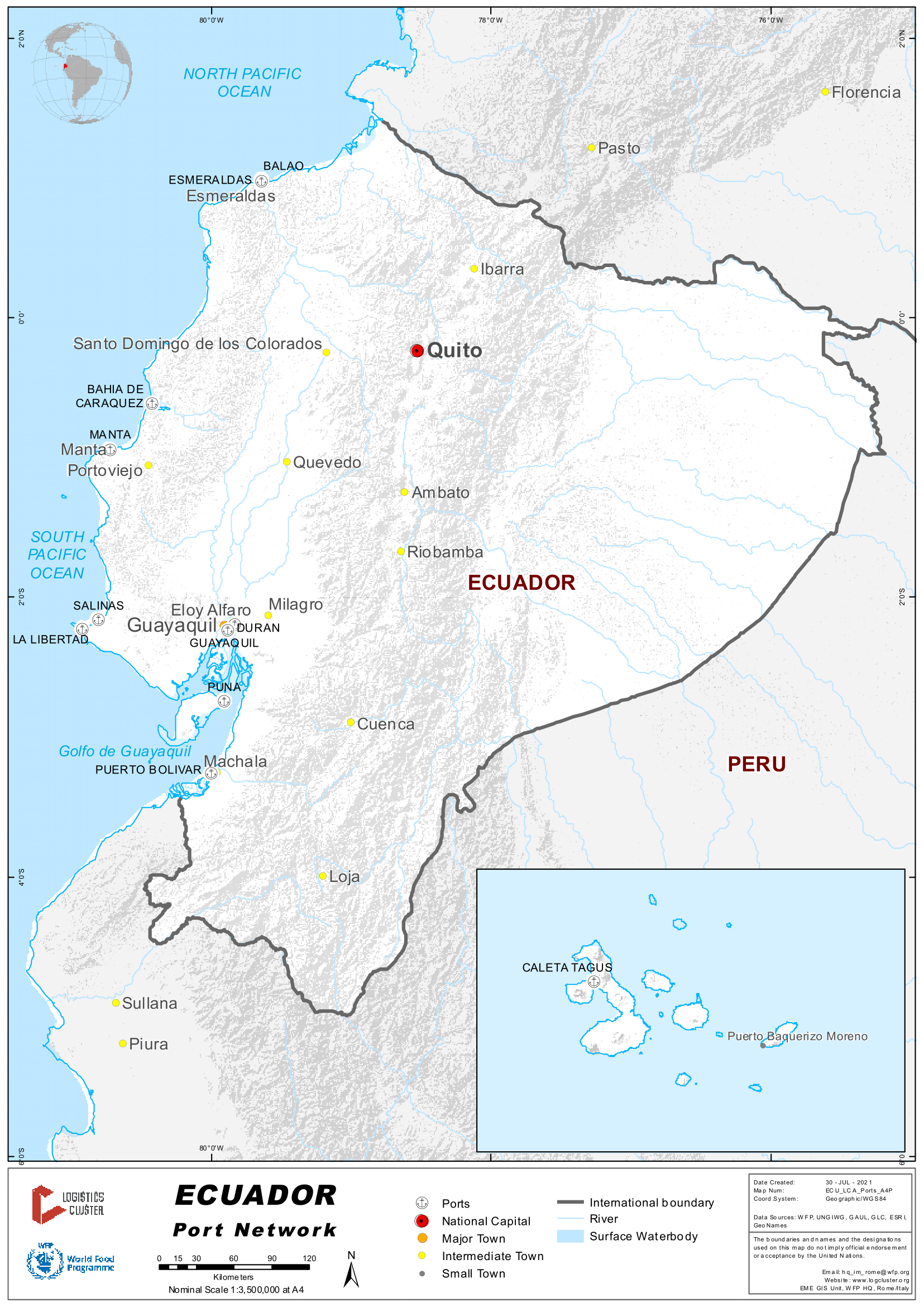
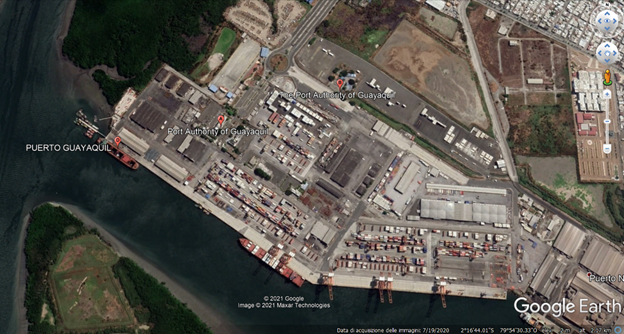

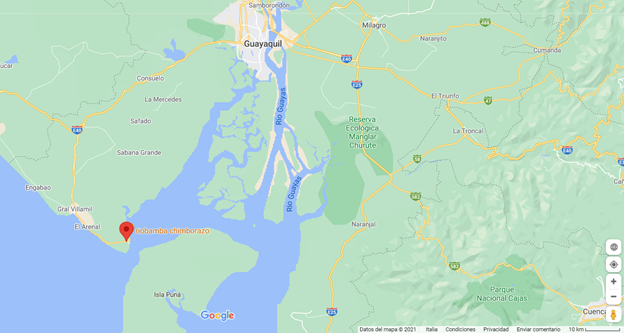
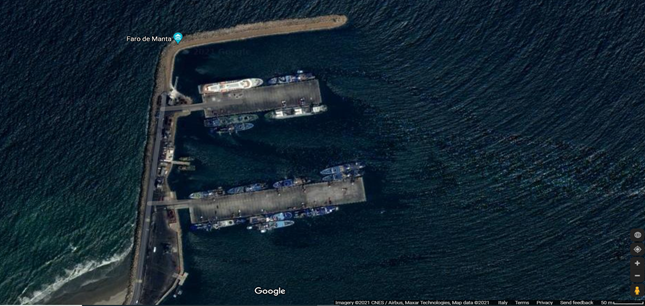

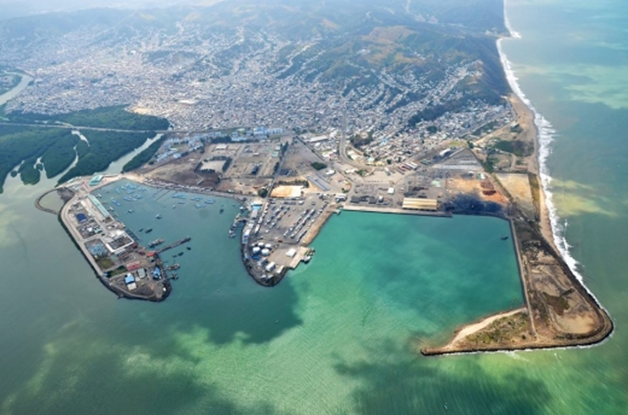
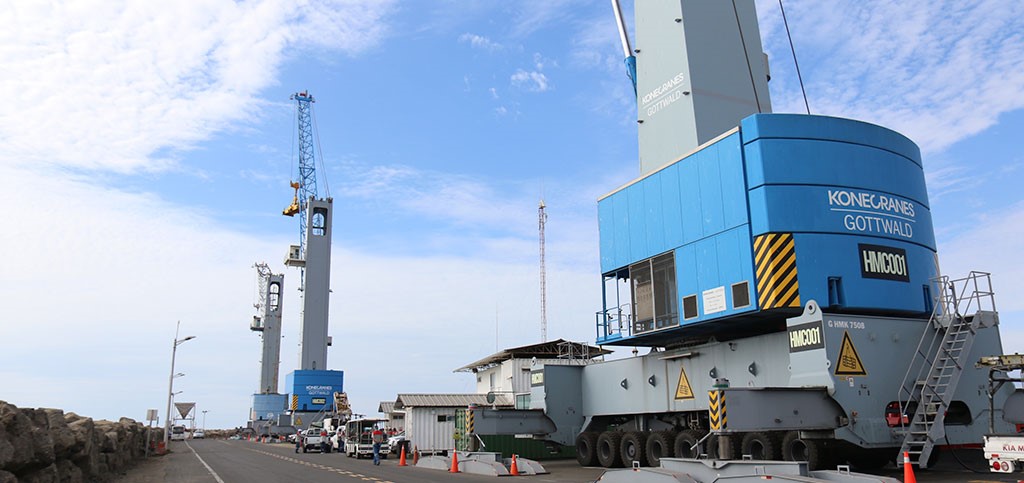

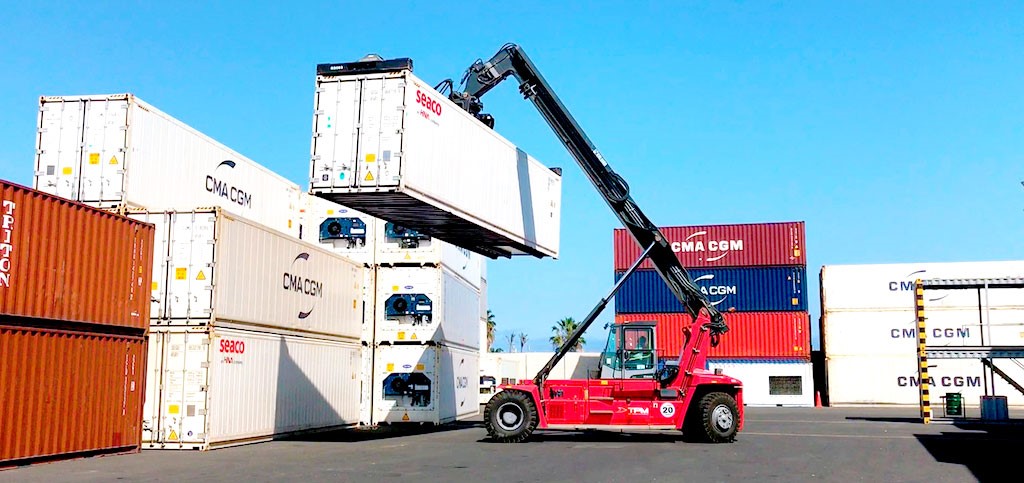
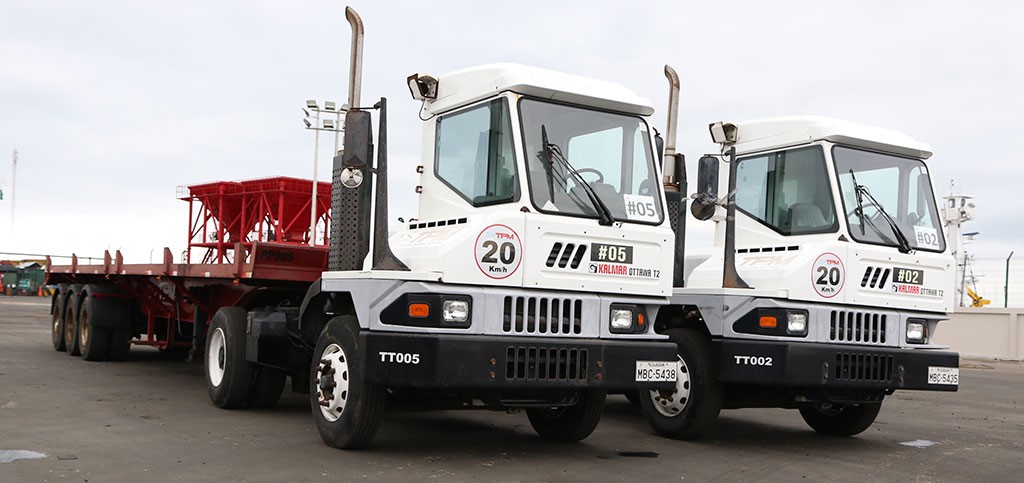
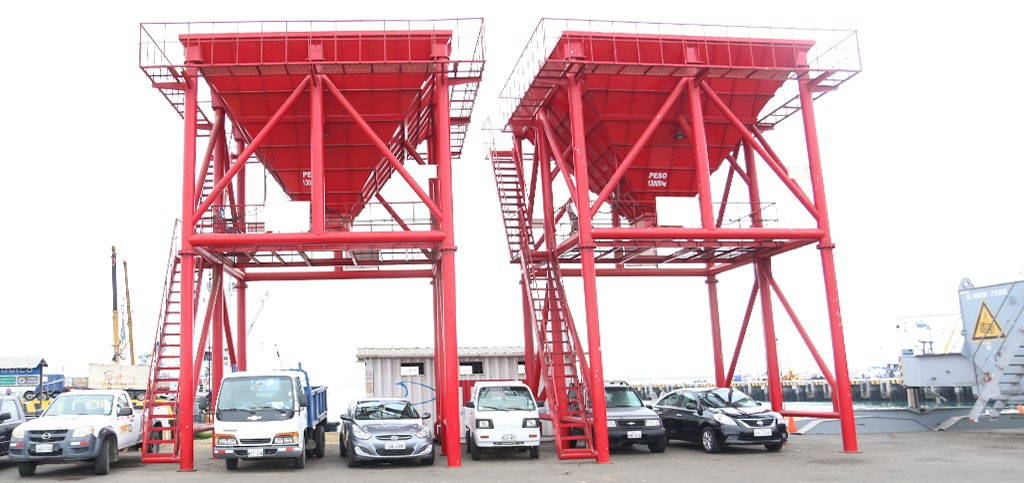
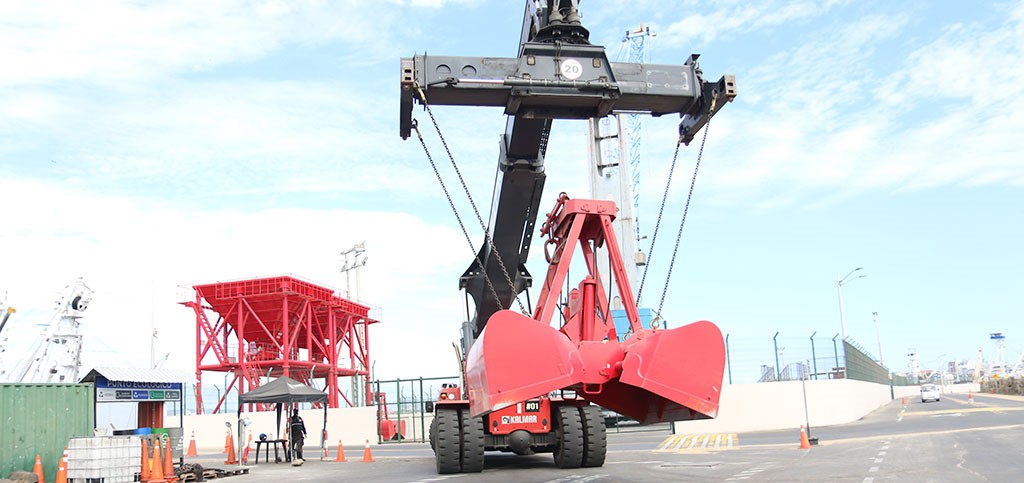
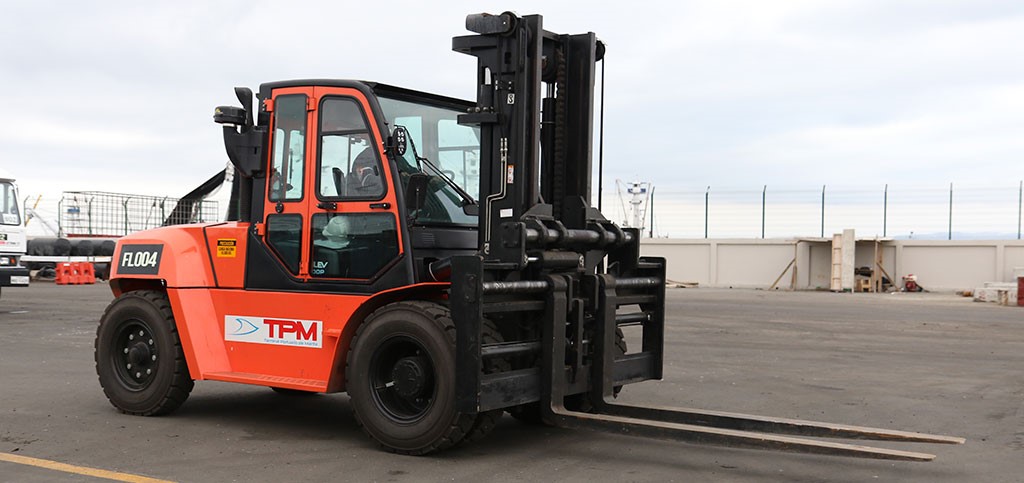
/cloudfront-us-east-1.images.arcpublishing.com/eluniverso/TRGXGNL3NFC5TIN353TDSFZF2Y.jpg)
